#robert shoens
Explore tagged Tumblr posts
Text





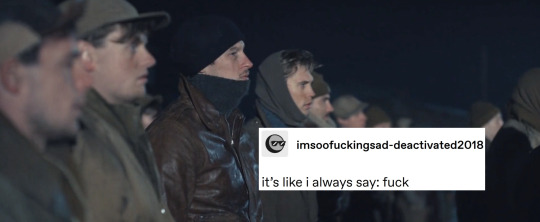


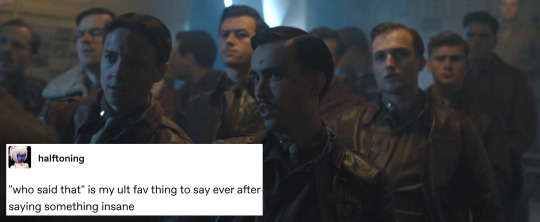



Masters of the Air - "Part Seven"
2/?
#Second's MotA edit#MotA#MotA spoilers#Masters of the Air#Robert 'Rosie' Rosenthal#Winifred 'Pappy' Lewis#Gale 'Buck' Cleven#Jack Kidd#Everett Blakely#John 'Bucky' Egan#Sandra Westgate#Robert Shoens#Harry Crosby#William Quinn#Charles K. Bailey
222 notes
·
View notes
Text



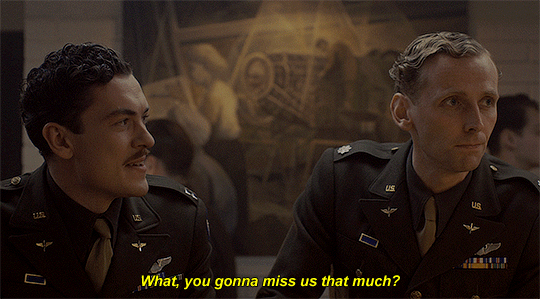

Brass is upping the end-of-tour requirements from twenty-five to thirty missions.
#masters of the air#mastersoftheairedit#motaedit#hbowaredit#robert rosenthal#rosie rosenthal#jack kidd#kidd x rosie#at first I read this in the context of kidd saying rosie was the best pilot he'd ever seen#and thought 'wow he really does look devastated'#(honourable mention: his very tiny nod in the 4th gif)#and then realised losing their best pilot was the least of his worries rn#he's thinking pretty much what shoens is saying except he's not going to say it#25 is a cause for celebration bc it hardly ever happens and now he thinks it won't happen again#but he wasn't planning to tell anyone just yet#on a... lighter note it does look a bit like rosie started out by trying to flirt with him and kidd is too distracted to notice#rosie does in fact look a bit protective of kidd when shoens starts. airing his feelings. but suspect kidd would find that a bit baffling#edit#**
230 notes
·
View notes
Photo

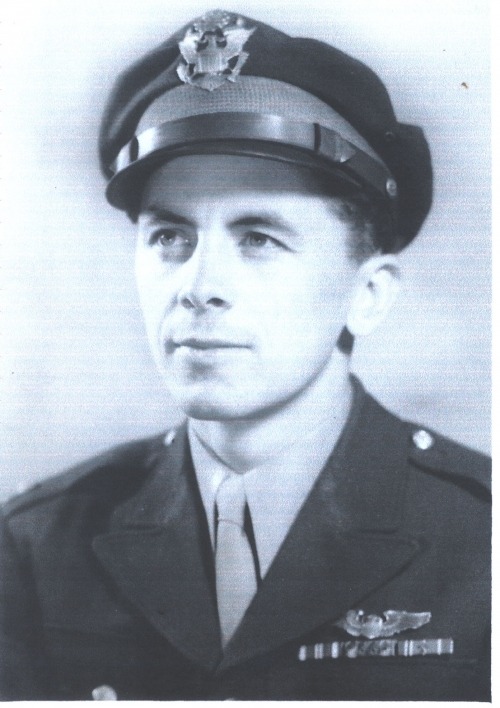



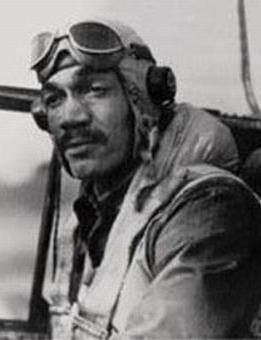
elan butler as lieutenant robert j. shoens (as pictured, shoens eventually becomes a captain, tho butler’s cv has him down as a lieutenant)
james bamford as staff sergeant edward (edmund?) a. musante (i might be going a little crazy, but i think his name is wrong on many websites! he’s edward on the official 100th bg website and on bamford’s cv, but he’s edmund on the american air museum website and findagrave. for all i know, the guy probably went by “eddie” or “ed” and somewhere along the line, someone made a recordkeeping mistake. and, yes. that is the clearest verifiable photo i could find of him. squint, and you might trick yourself into seeing his face)
bradley banton as lieutenant colonel lee “buddy” archer (another tuskegee airman!)
there’s also cameron jack as “jack”, david austin-barnes as “jimmy”, kojo quainoo as a weather officer, david angland as a prisoner of war, martin bassindale as a recent arrival kriegie, and eric sirakian as “thorpe abbot” which is confusing because that is the name of a Place, not a Person.
#masters of the air#hbo war#cast#robert shoens#ed musante#lee archer#elan butler#james bamford#bradley banton#cameron jack#david austin-barnes#kojo quainoo#david angland#martin bassindale#eric sirakian
15 notes
·
View notes
Note
Do you have any theories of what happened to zeb Quinn?
Actually, in July 2017, Robert Owens was charged with his murder. He was already serving time for murdering Food Network contestant Christie Shoen, her husband, and their unborn baby.
15 notes
·
View notes
Text
Base Tendriling Travel Expenses

As company traveling expenditures nose up, Businesses are recognizing that better Cost Management methods can make a Big Difference
US. Business travel costs climbed to over 143 billion in 1994, in accordance with American Express' most recent survey on business travel management. Private-sector employers spend an estimated $2,484 per employee on travel and entertainment, a 17 percent increase over the past four years.
Corporate T&E costs, now the third-largest controllable expense behind sales and data-processing costs, are under new scrutiny. Corporations are realizing that even a savings of 1 percent or 2 percent can translate into millions of dollars added to their bottom line.
Savings of that order are sure to get management's attention, which is a requirement for this type of project. Involvement begins with understanding and evaluating the components of T&E management in order to control and monitor it more effectively.
Hands-on management includes assigning responsibility for travel management, implementing a quality-measurement system for travel services used, and writing and distributing a formal travel policy. Only 64 percent of U.S. corporations have travel policies.
Even with senior management's support, the road to savings is rocky-only one in three companies has successfully instituted an internal program that will help cut travel expenses, and the myriad aspects of travel are so overwhelming, most companies don't know where to start. "The industry of traveling is centered on advice," says Steven R. Schoen, founder and CEO of The Global Group Inc."Until this time as being a passenger actually sets foot onto the plane, they will have [just ] been buying information"
If that's the case, information technology seems a viable place to hammer out those elusive, but highly sought-after, savings. "Technological inventions in the company travel industry will be allowing firms to appreciate the capacity of automation to restrain and reduce in direct [traveling ] costs," says Roger H. Ballou, president of the Travel Services Group USA of American Express. "In addition, many businesses are focusing on caliber apps which have complex process improvement and reengineering efforts created to greatly improve T&E management procedures and reduce in direct expenses "
As companies look to technology to make potential savings a reality, they can get very creative about the methods they employ.
The Great Leveler
Centralized reservation systems were long the exclusive domain of travel agents and other industry professionals. But all that changed in November 1992 when a Department of Transportation ruling allowed the general public access to systems such as Apollo and SABRE. Travel-management software, such as TripPower and TravelNet, immediately sprang up, providing corporations insight into where their T&E dollars are being spent.
The software tracks spending trends by interfacing with the corporation's database and providing access to centralized reservation systems that provide immediate reservation information to airlines, hotels and car rental agencies. These programs also allow users to generate computerized travel reports on cost savings with details on where discounts were obtained, hotel and car usage and patterns of travel between cities. Actual data gives corporations added leverage when negotiating discounts with travel suppliers.
"When you possess the info, there's no necessity to return to square one everytime you opt to modify bureaus," says Mary Savovie Stephens, travel manager for biotech giant Chiron Corp..
Sybase Inc., a client/server software leader with an annual T&E budget of more than $15 million, agrees. "Software gives us unparalleled insight to how workers are paying their traveling dollars and far much better manage to negotiate with traveling service providers," says Robert Lerner, director of credit and corporate travel services for Sybase Inc."We now have better usage of datafaster, faster, at a real life environment, that will be expected to attract us enormous economies in T&E. We now have control over our traveling info no longer need to rely exclusively on the airlines and agencies "
The cost for this privilege depends on the volume of business. One-time purchases of travel-management software can run from under $100 to more than $125,000. Some software providers will accommodate smaller users by selling software piecemeal for $5 to $12 per booked trip, still a significant savings from the $50 industry norm per transaction.
No More Tickets
Paperless travel is catching on faster than the paperless office ever did as both service providers and consumers work together to reduce ticket prices for business travelers. Perhaps the most cutting-edge of the advances is "ticketless" travel, which almost all major airlines are testing.
In the meantime, travel providers and agencies are experimenting with new technologies to enable travelers to book travel services via the Internet, e-mail and unattended ticketing kiosks. Best Western International, Hyatt Hotels and several other major hotel chains market on the Internet. These services reduce the need for paper and offer better service and such peripheral benefits as increased efficiency, improved tracking of travel expenses and trends, and cost reduction.
Dennis Egolf, CFO of the Veterans Affairs Medical Center in Louisville, Ky., realized that the medical center's decentralized location, a quarter-mile from the hospital, made efficiency difficult. "We were decreasing production period and matters got lost," he says. "Every Me Mo must become hand-carried for approval, also we took seven distinct copies of every and every travel arrangement " As a result, Egolf tried an off-the-shelf, paper-reduction software package designed for the federal government.
The software allows the hospital to manage travel on-line, from tracking per-diem allowances and calculating expenses to generating cash advance forms and authorizing reimbursement vouchers. The software also lets the hospital keep a running account of its travel expenses and its remaining travel budget.
"Today, for many practical reasons, this machine is paperless," says Egolf. The software has helped the hospital reduce document processing time by 93 percent. "The unique goal centered on managing employee traveling without newspaper," he says. "We have achieved this goal, simply as a result of efforts of their team and in a part thanks to the accuracy of this computer software."
With only a $6,000 investment, the hospital saved $70 each employee trip and saved almost half of its $200,000 T&E budget through the paper-reduction program.
Out There
Consolidation of corporate travel arrangements by fewer agencies has been a growing trend since 1982. Nearly three out of four companies now make travel plans for their business locations through a single agency as opposed to 51 percent in 1988. Two major benefits of agency consolidation are the facilitation of accounting and T&E budgeting, as well as leverage in negotiating future travel discounts.
A major technological advance that allows this consolidation trend to flourish is the introduction of satellite ticket printers (STPs). Using STPs enables a travel agency to consolidate all operations to one home office, and still send all necessary tickets to various locations instantly via various wire services. As the term implies, the machinery prints out airline tickets on-site immediately, eliminating delivery charges.
For London Fog, STPs are a blessing. London Fog's annual T&E budget of more than $15 million is split equally between its two locations in Eldersburg, Md., and New York City. Each location purchases the same number of tickets, so equal access to ticketing from their agency is a must. With an STP in their two locations, the company services both offices with one agency in Baltimore. Each office has access to immediate tickets and still manages to save by not having to pay courier and express mail charges that can range up to $15 for each of the more than 500 tickets each purchases annually.
Conde Nast Publications' Yearly T&E funding of greater than $20 million is allocated one of its own places in Los Angeles, San Francisco, Chicago, New York and Detroit. Since 1994, traveling agreements are managed by a dedicated service, Advanced Travel Management at New York City, by installing STP in every one of those five locations. As well as greater efficacy thanks to consolidation, Conde Nast has got the capability to improve travel plans in an instant's notice and also have fresh tickets at hand immediately.
The actual advantage is the fact that the machines have been owned and kept by the traveling agency., thus there isn't any charge to this corporation. As a result of significant expense entailed, nevertheless, STPs remain a choice just for major ticket buyers. "STPs are a viable option in this process for any location that purchases more than $500,000 per year in tickets," says Shoen.
As air fare averages 43 percentage of almost any provider's T&E expenditures, savings accessible through the respective applications of technology are very striking. By way of instance, the capacity of corporations to collect and analyze their particular travel styles has resulted in the production of net-fare purchasing-negotiating an amount between a business and an air line to obtain tickets that will not incorporate the extra expenses of commissions, overrides, trade fees, bureau trade fees and different discounts.
Even though most major U.S. carriers openly state they don't really pay corporate discounts below printed market deliveries, the American Express poll on business travel direction discovered that 38 per cent of U.S. organizations had use of, or had executed, negotiated airline discounts. The accessibility and mechanisms of these agreements vary widely by company.
What is the Price?
Fred Swaffer, transport director for Hewlett-Packard and also a strong urge of the net-pricing platform, has initiated the idea of fee-based pricing together using travel-management businesses under contract using H-P. He says H-P, that spends more than $528 million each year on T&E, intends to possess all aviation predicated on net-fare prices. "At the present time, we have several net fares at various stages of agreement," he states. "These fares are negotiated with the airlines at the corporate level, then trickle down to each of our seven geographical regions."
Frank Kent, Western regional director for United Airlines, concurs:"United Airlines participates in corporate volume discounting, such as bulk ticket purchases, but not with net pricing. I have yet to see one net-fare agreement that makes sense to us. We're not opposed to it, but we just don't understand it right now."
Kent worries,"Airlines should approach corporations with long-term strategic relationships rather than just discounts. We would like to see ourselves committed to a corporation rather than just involved."
As business traveling expenses nose up, businesses are understanding that better cost management methods are able to really make a distinction.
US. Business travel costs climbed to over 143 billion in 1994, in accordance with American Express' most recent survey on business travel management. Private-sector employers spend an estimated $2,484 per employee on travel and entertainment, a 17 percent increase over the past four years.
Corporate T&E costs, now the third-largest controllable expense behind sales and data-processing costs, are under new scrutiny. Corporations are realizing that even a savings of 1 percent or 2 percent can translate into millions of dollars added to their bottom line.
Savings of that order are sure to get management's attention, which is a requirement for this type of project. Involvement begins with understanding and evaluating the components of T&E management in order to control and monitor it more effectively.
Hands-on management includes assigning responsibility for travel management, implementing a quality-measurement system for travel services used, and writing and distributing a formal travel policy. Only 64 percent of U.S. corporations have travel policies.
Even with senior management's support, the road to savings is rocky-only one in three companies has successfully instituted an internal program that will help cut travel expenses, and the myriad aspects of travel are so overwhelming, most companies don't know where to start. "The industry of traveling is centered on advice," says Steven R. Schoen, founder and CEO of The Global Group Inc."Until this time as being a passenger actually sets foot onto the plane, they will have [just ] been buying information"
If that's the case, information technology seems a viable place to hammer out those elusive, but highly sought-after, savings. "Technological inventions in the company travel industry will be allowing firms to appreciate the capacity of automation to restrain and reduce in direct [traveling ] costs," says Roger H. Ballou, president of the Travel Services Group USA of American Express. "In addition, many businesses are focusing on caliber apps which have complex process improvement and reengineering efforts created to greatly improve T&E management procedures and reduce in direct expenses."
As companies look to technology to make potential savings a reality, they can get very creative about the methods they employ.
The Great Leveler
Centralized reservation systems were long the exclusive domain of travel agents and other industry professionals. But all that changed in November 1992 when a Department of Transportation ruling allowed the general public access to systems such as Apollo and SABRE. Travel-management software, such as TripPower and TravelNet, immediately sprang up, providing corporations insight into where their T&E dollars are being spent.
The software tracks spending trends by interfacing with the corporation's database and providing access to centralized reservation systems that provide immediate reservation information to airlines, hotels and car rental agencies. These programs also allow users to generate computerized travel reports on cost savings with details on where discounts were obtained, hotel and car usage and patterns of travel between cities. Actual data gives corporations added leverage when negotiating discounts with travel suppliers.
"When you possess the info, there's no necessity to return to square one everytime you opt to modify bureaus," says Mary Savovie Stephens, travel manager for biotech giant Chiron Corp..
Sybase Inc., a client/server software leader with an annual T&E budget of more than $15 million, agrees. "Software gives us unparalleled insight to how workers are paying their traveling dollars and far much better manage to negotiate with traveling service providers," says Robert Lerner, director of credit and corporate travel services for Sybase Inc."We now have better usage of datafaster, faster, at a real life environment, that will be expected to attract us enormous economies in T&E. We now have control over our traveling info no longer need to rely exclusively on the airlines and agencies "
The cost for this privilege depends on the volume of business. One-time purchases of travel-management software can run from under $100 to more than $125,000. Some software providers will accommodate smaller users by selling software piecemeal for $5 to $12 per booked trip, still a significant savings from the $50 industry norm per transaction.
No More Tickets
Paperless travel is catching on faster than the paperless office ever did as both service providers and consumers work together to reduce ticket prices for business travelers. Perhaps the most cutting-edge of the advances is "ticketless" travel, which almost all major airlines are testing.
In the meantime, travel providers and agencies are experimenting with new technologies to enable travelers to book travel services via the Internet, e-mail and unattended ticketing kiosks. Best Western International, Hyatt Hotels and several other major hotel chains market on the Internet. These services reduce the need for paper and offer better service and such peripheral benefits as increased efficiency, improved tracking of travel expenses and trends, and cost reduction.
Dennis Egolf, CFO of the Veterans Affairs Medical Center in Louisville, Ky., realized that the medical center's decentralized location, a quarter-mile from the hospital, made efficiency difficult. "We were losing time plus matters got lost," he says. "Every Me Mo must become hand-carried for approval, also we took seven distinct copies of every and every travel arrangement " As a result, Egolf tried an off-the-shelf, paper-reduction software package designed for the federal government.
The software allows the hospital to manage travel on-line, from tracking per-diem allowances and calculating expenses to generating cash advance forms and authorizing reimbursement vouchers. The software also lets the hospital keep a running account of its travel expenses and its remaining travel budget.
"Today, for many practical reasons, this machine is paperless," says Egolf. The software has helped the hospital reduce document processing time by 93 percent. "The unique goal centered on managing employee traveling without newspaper," he says. "We have achieved this goal, simply as a result of efforts of their team and in a part thanks to the accuracy of this computer software."
With only a $6,000 investment, the hospital saved $70 each employee trip and saved almost half of its $200,000 T&E budget through the paper-reduction program.
Out There
Consolidation of corporate travel arrangements by fewer agencies has been a growing trend since 1982. Nearly three out of four companies now make travel plans for their business locations through a single agency as opposed to 51 percent in 1988. Two major benefits of agency consolidation are the facilitation of accounting and T&E budgeting, as well as leverage in negotiating future travel discounts.
A major technological advance that allows this consolidation trend to flourish is the introduction of satellite ticket printers (STPs). Using STPs enables a travel agency to consolidate all operations to one home office, and still send all necessary tickets to various locations instantly via various wire services. As the term implies, the machinery prints out airline tickets on-site immediately, eliminating delivery charges.
For London Fog, STPs are a blessing. London Fog's annual T&E budget of more than $15 million is split equally between its two locations in Eldersburg, Md., and New York City. Each location purchases the same number of tickets, so equal access to ticketing from their agency is a must. With an STP in their two locations, the company services both offices with one agency in Baltimore. Each office has access to immediate tickets and still manages to save by not having to pay courier and express mail charges that can range up to $15 for each of the more than 500 tickets each purchases annually.
Conde Nast Publications' Yearly T&E funding of greater than $20 million is allocated one of its own places in Los Angeles, San Francisco, Chicago, New York and Detroit. Since 1994, traveling agreements are managed by a dedicated service, Advanced Travel Management at New York City, by installing STP in every one of those five locations. As well as greater efficacy thanks to consolidation, Conde Nast has got the capability to improve travel plans in an instant's notice and also have fresh tickets at hand immediately.
The actual advantage is the fact that the machines have been owned and kept by the traveling agency., thus there isn't any charge to this corporation. As a result of significant expense entailed, nevertheless, STPs remain a choice just for major ticket buyers. "STPs are a viable option in this process for any location that purchases more than $500,000 per year in tickets," says Shoen.
As air fare averages 43 percentage of almost any provider's T&E expenditures, savings accessible through the respective applications of technology are very striking. By way of instance, the capacity of corporations to collect and analyze their particular travel styles has resulted in the production of net-fare purchasing-negotiating an amount between a business and an air line to obtain tickets that will not incorporate the extra expenses of commissions, overrides, trade fees, bureau trade fees and different discounts.
Even though most major U.S. carriers openly state they don't really pay corporate discounts below printed market deliveries, the American Express poll on business travel direction discovered that 38 per cent of U.S. organizations had access into, or had executed, negotiated airline prices. The accessibility and mechanisms of these agreements vary widely by company.
What is the Price?
Fred Swaffer, transport director for Hewlett-Packard and also a strong urge of the net-pricing platform, has initiated the idea of fee-based pricing together using travel-management businesses under contract using H-P. He says H-P, that spends more than $528 million each year on T&E, intends to possess all aviation predicated on net-fare prices. "At the present time, we have several net fares at various stages of agreement," he states. "These fares are negotiated with the airlines at the corporate level, then trickle down to each of our seven geographical regions."
0 notes
Note
What are good resources for someone just starting to learn about Judaism (esp with a Christian background)?
Sure thing!
First, a note on finding actually Jewish books, and not evangelical Christian ones – Reliably Jewish publishers include JPS (Jewish Publication Society), any of the major Jewish movement publishers (Reform’s CCAR, or Orthodox’s OU as examples), ArtScroll, Koren. If you’re not sure, double check to see if you can find it on the Jewish Book Council Website.
Specific text for this: What I wish My Christian Friends Knew About Judaism (Shoen)
Resource One - Tanakh or Torah:
Recommended: JPS The Jewish Study Bible*, Robert Alter’s The Five Books of Moses*, or a Chumash version (like organized Torah portions and commentary), like the Stone Chumash or Etz Hayim (for example.)
+ Understanding Torah: Who Wrote the Bible? (Friedman) and Essential Torah (Robinson) or Biblical Literacy (Telushkin)
Resource Two - Introductory Guides:
Jewish Literacy (Telushkin) *
Essential Judaism (Robinson) *
Judaism’s 10 Best Ideas (Green) *
The Jewish Book of Why (Kolatch)
Settings of Silver: An Introduction to Judaism (Wylen)
Resource Three - Theology Books:
Finding God: Selected Responses (Sonsino)*
What do Jews Believe?: The Spiritual Foundations of Judaism (Ariel)
The Sabbath (Heschel) *
God In Search of Man: A Philosophy of Judaism (Heschel)
I Asked For Wonder: A Spiritual Anthology (Heschel)
Resource Four - History:
Either of the books “A Short History of the Jewish People” (or whatever that title is. There’s two different ones. People seem to prefer the shorter of the two, with the blue cover)
The Jews, God, and History (Dimont - dated but a compelling read imo.)*
The Story of the Jews (Schama).
Above * are my personal priorities
Shoah History:
The Holocaust: A New History (Rees)
Nazi Germany and The Jews (Friedlander, 2 volumes or abridged edition)
Denial: Holocaust History on Trial (Lipstadt)
Websites:
Can’t go wrong with MyJewishLearning.com, honestly!
- For reference, there is one scholarly Jewish contextualization of the Christian New Testament. It is NOT an evangelizing text - it is a scholar’s commentary. This book is published by Oxford University Press, and is called The Jewish Annotated New Testament. Jewish scholars and scholars of Judaism annotated/commentated the NT in Jewish historical/cultural perspective.
121 notes
·
View notes
Text
Wednesday Roundup 29.11.18
Another week another grab bag of comics in what might be one of the highest rated weeks of the Roundup since I started over a year ago! But how does everyone hold up? How do they all compare? I’m asking for dramatizing’s sake but genuinely there’s nothing in this week that isn’t immensely enjoyable if they even remotely pique your interests. GREAT week for comics, everyone. GG.

Tesladyne’s Atomic Robo, Image’s Black Magick, DC’s Super Sons, IDW’s Teenage Mutant Ninja Turtles/Ghostbusters II, IDW’s Transformers: Lost Light
Tesladyne’s Atomic Robo and the Spectre of Tomorrow #2 Brian Clevinger, Scott Wegener, Anthony Clark, Jeff Powell

There is a certain amount of dry wit and scientific community knowledge that is instrumental to getting the full experience out of the clever writing and deceptively simplistic design of Atomic Robo, and for the past few months I’ve been making a solid attempt to evaluate these comics and Robo himself based on the entertainment received without much of that. And, in all honesty, the more I’ve looked into this the more I wonder if that’s the wrong approach for “unbiased” evaluation to begin with.
For example, I’ve been very firm on my description of Usagi Yojimbo as being one of those great comics that only gets more and more enriching as you grow a personal interest in history, Japanese culture, and mythologizing -- it’s far enough removed from our actual realities and accessible enough that I recommend it to people who don’t have those interests, but I find that those interests add so much more to the experience. The simple designs, the consistency, the way the narrative is built in episodic spurts more than long form narrative -- those are all reasons I can in good faith recommend these comics to people outside of niche interests, but those niche interests add so much to any reading that it’s difficult to really express why anyone would want to read without so much as acknowledging it.
That all said, this particular issue continues that same level of quality and intrigue, but also rewards the emotional investment you may have in the characters involved. PersonallyI relate a lot more to Robo’s sense of self-exile and reclusive depression which only causes more and more problems to pile up far more than I’d have ever thought I would, and I don’t think I’d be alone in that. There’s also the long time readers’ reward in seeing consequences to that stollen crystal from Doctor Dinosaur’s island ages ago. All great stuff which is only more greatly emphasized by the creative use of familiar real world scientific organizations and entities wrapped up in this bizarre and surreal reality of Atomic Robo.

Image’s Black Magick (2015-present) #9 Greg Rucka, Nicola Scott

Sometimes the real value of storytelling lies less in identifying the complete package and more in being able to identify the way it weaves multiple elements and even genres at once to provide a new kind of satisfying narrative. And it’s in that way that I think Black Magick has so quickly become not only one of my favorite Greg Rucka and Nicola Scott comics, but one of my favorite recent publications in general.
Black Magick follows a noir-style crime drama in structure, but its embrace of the supernatural and, especially, in witching stories provide the sort of edge that makes the tiredness of the former genre feel fresh even in the heavily saturated market for procedurals we have currently, while the latter feels completely reborn from that small but influential boom we felt in the 90s. I have never been closer to re-marathoning The Craft, Practical Magic and Charmed outside of the Halloween season. But each new issue of Black Magick brings me that step closer.
This issue also happens to follow the very specific to this week trend of leaning heavily on emotional stakes to really pull itself and its characters above even the thickest of genre settings however, and Black Magick specifically manages that while maintaining an incredibly tight hold on Rowan’s perspective. Which is fascinating because on reread you really realize how much the POV shifts away from Rowan and onto the other characters and their subplots but in reflection it all feels like it’s only in service to Rowan’s main story more than anything else.
Nicola Scott continues to prove she is perhaps the most gifted and, really, the most prolific of comic book artists in the modern era and I maintain that seeing the true extent of her talents is best assessed by reading this comic and just allowing yourself to be blown away by it all.
This issue also gets major props for introducing a familiar. Good, comic. Perhaps not as action filled or breathtaking as the last issue which was a nail biter from start to finish, but most certainly deserving of those 4/5 stars.

DC’s Super Sons (2017-present) Annual #1 Peter J. Tomasi, Paul Pelletier, Cam Smith, HI-FI

If you’re one of those people -- and let me absolutely clear that it is more than understandable to be one of these people -- who find super pets and the absolute general ridiculousness of a storyline that involves super animals in any capacity with a timeline that makes no sense and the only real dialogue that matters being literal growls barks and yips, this is not an issue worth your $4.99, you’ll hate it and be annoyed with people like me screaming from the rooftops that you should buy it and read it and love it. And that is completely and utterly fine and reasonable.
I am not fine or reasonable, however, and this is literally the most rewarding $4.99 I’ve spent on a comic in ages. Because no joke there were several times while I was liveblogging this issue both on my main blog and to my friends in PMs that I was literally in tears crying with laughter because
because
Holy shit guys.
In recent years a continued criticism I have carried for superhero comics is that there is a huge tone problem, in that there is a genre’s worth of tones and atmospheres that could be played off of to give at least each individual book if not each individual issue its own feeling and its own intrigue that would set it apart from the rest of the line that given week. DC, especially, has contributed greatly to this tone problem because as I’ve said many times, there was about five years there where even the color palettes for their comics had no variation between them. And it was maddening.
So to have something goofy, to have something different, and to have it be fun, enjoyable, full of twists and turns, and not so damn determined to take itself beyond seriously, it makes this comic throwback feel like a breath of fresh air in the most necessary of ways.
And I should be clear, I don’t mean that this comic is for everyone, or that Super Sons as a comic in general doesn’t manage to strike that cord a lot since it really is one of the most enjoyable comics DC has put out in years, but this really felt like a treat, an additional, ridiculous, hilarious story set so far apart from what’s come before. It’s greatly enjoyable. Genuinely deserve of my coveted 5/5 stars.

IDW’s Teenage Mutant Ninja Turtles/Ghostbusters II (2017) #5 (of 5) Erik Burnham, Tom Waltz, Dan Shoening, Charles Paul Wilson III, Luis Antonio Delgado

We finally come to an end of this second giant mashup of Ghostbusters and Teenage Mutant Ninja Turtles, truly the sort of framework and pairing that is as old as time, and I get to reward everyone’s patience with me reviewing these for a month an a half straight with some final thoughts of sorts.
I compliment both of these writers quite a bit for their respective contributions and the absolute mastery they both have shown for the voices of their respective franchises, but as this week is pretty well summed up with Rena Waxes Philosophically And Is Old, I think both of our times are better spent here by pointing out something a bit different that really came together with this issue. And that’s that for how pitch perfect these writers are for capturing the long expected voices of these beloved characters, the real remarkable compliment I can give them is how they have uniquely captured and redefined these voices to really make them their own.
Despite how much my childhood might have desired these team ups (and believe me, it so did) the fact is that these interactions and these relationships are utterly a modern invention, and what could easily fail outside of the concept states instead flourishes with us here specifically because they are sticking to their guns and not always angling for the obvious route with these interactions. That’s what makes all of this so fascinating and so rewarding as a fan.
In comparison to the predecessor, Teenage Mutant Ninja Turtles/Ghostbusters II does not have as tight of a storyline with a steady but consistent pacing and understanding of where it’s going. But I think because that set up was taking care of in the original these five issues allowed for more experimentation and more concentration on character development and fun scenarios. So if you’re far more invested in character interactions and in comics taking full advantage of the outrageous and unique tone of its medium, there’s probably all the more for you to enjoy with this compared to the first. But at the same time, it would be lying to say that the main driving plot and stakes, with Darius Dun’s ghost and the Fast Forward Evil Turtles-lite trying to harvest souls in a complicated and underused concept didn’t come off as overall a bit weaker than the original.
All that said, ultimately this comic is a joy for fans and it seems to be aimed quite specifically at that audience either way. And in that case I have to give it my highest regards.

IDW’s Transformers: Lost Light (2016-present) #11 James Roberts, Jack Lawrence, Joana Lafuente

Ever since the last arc of James Robert’s parent series, More Than Meets the eye, there’s been a few gaps in the concept of what happened on the Lost Light during and after the mutiny, whether or not the crew saw the Rod Squad’s las message, and especially curious to people like me who can’t help themselves but love our affable and entirely flawed co-Captain Rodimus, what was his final request for his burial and what not since we saw the rest of the crew’s.
And in the second part of this “Mutineer Trilogy” that we have for Lost Light, we are at long last getting our answers to many of those questions. And for a reveal that was a year coming, the Lost Light manages to pack all the twists, turns, and punches that we could hope to expect!
It’s fascinating to see Getaway’s sense of grandeur when it comes to himself, his plans, and really the whole driving force with the mutiny, but I really find that where Roberts’ writing and where we as readers get the most out of is the interesting and very layered sense that Roberts has for the lore of the Transformers. It feels like every subtle piece of dialogue, whether it concerns lore and mythology of the universe or not, is really weaved throughout with a submersion in this fictional culture. And that, especially, is really revealing here. It’s a very rewarding way to handle lore and I greatly appreciate it.
One that does make me apprehensive with the turns Lost Light has taken most recently, however, is that moral grayness sometimes feels really blurred with a light take or even somewhat forgiving light given to what are undeniably and outright stated as fascist and genocidal elements of the Transformers’ past, especially Megatron. Having this issue completely dedicated to Getaway’s perspective while tackling these themes doesn’t really help because he is most egregiously one of the most villainous and traitorous characters the series has tackled, but while it feels like he’s only using the aghast feelings of the crew toward Megatron, ultimately he’s the only one who gives a speech against Megatron’s past of genocide and fascism while also taking over in the most truly reprehensible and fascist ways possible himself. This is further blurred by having some very topical buzz words like “fake news” uttered by Getaway in a... lbr pretty nonsensical way in-universe, but then have him going around imprisoning or hideously killing all of the crew which doesn’t agree with him.
I’m basically waiting for Roberts to fully address all of this in the story but right now it feels very much like “both sides are extreme and bad” mentality that, given Roberts’ politics and statements irl, I don’t think is what he ultimately wants this story to be coming away as, but I’m nervous and would like for things to tread lightly considering the current environment.
ALL of my apprehensions and concerns out of the way, this is still a fascinating and ultimately fantastic comic that I really truly enjoy and would love to see more of because if Roberts’ Transformers is guilty of anything it’s definitely guilty of raising my expectations and setting that bar so high because of how good and how complicated and interesting all of it ca be in the right hands.

Hey there! We finish up another pretty fun, if not quick, week in comics with lots of stories and characters, and another pretty great time from yours truly. And if you enjoy these write-ups or anything else I do whether it be the Roundups, my Rambles, my personal creative projects, or you’re interested in my upcoming podcast, you can help contribute through donations to my Ko-Fi, Patreon, or PayPal. For as little as $1 per project, you make all of this possible.
You could also support me by going to my main blog, @renaroo, where I’ll soon be listing prices and more for art and writing commissions.
RenaRoo Ko-Fi | RenaRoo Patreon | RenaRoo PayPal
#Rena Roundups#Wednesday Spoilers#SPOILERS#Atomic Robo and the Spectre of Tomorrow#Black Magick#Super Sons (2017 )#Teenage Mutant Ninja Turtles/Ghostbusters II#Transformers: Lost Light (2016 )
8 notes
·
View notes
Text
LUCY SELLS CRAIG TO WAYNE NEWTON
S1;E9 ~ November 25, 1968


Directed by Jack Donohue ~ Written by Robert O'Brien
Synopsis
Lucy gets Craig a gig filling in for Wayne Newton's drummer. Naturally, Lucy and Kim also manage to get into the act.
Regular Cast
Lucille Ball (Lucy Carter), Gale Gordon (Harrison Otis Carter), Lucie Arnaz (Kim Carter), Desi Arnaz Jr. (Craig Carter)
Guest Cast

Wayne Newton (Himself) also played himself in “Lucy Discovers Wayne Newton” (TLS S4;E14). He is one of the best-known entertainers in Las Vegas, known by the nicknames the ‘Midnight Idol,’ ‘Mr. Las Vegas’ and ‘Mr. Entertainment.’ His well-known songs include 1972’s “Daddy, Don’t You Walk So Fast” (#4 on the Billboard chart), “Years” (1980), and his signature song “Danke Schoen” (1963), which he performs in this episode. He will also play himself in a 1970 episode of “Here’s Lucy.”
Wayne Newton introduces this episode on the “Here's Lucy” DVD. He credits Lucille Ball with helping discover him and fostering his talent.
Jerry Newton (Himself) is the older brother of Wayne Newton. He plays the guitar for Wayne Newton. He will also appear in 1970's “Lucy and Wayne Newton” (S2;E22).
Jerry's catch phrase is “Oh, gosh yes.”
Tommy Amato (Himself) was a bandleader and Wayne Newton's bass player. He will also appear in 1970's “Lucy and Wayne Newton” (S2;E22).
Amato has one line of dialogue but is not identified by name.
Don Vincent (Himself) was a composer, conductor, and actor. Here he plays piano for Wayne Newton. He played himself on a 1981 episode of “Vega$” guest starring Wayne Newton.
Vincent is not identified by name and has no dialogue.
Harvey Lang (Himself) was Wayne Newton's drummer. This is his only screen credit.
Lang has no dialogue.
Uncredited Concert Specatators Include:
Jack Berle was the older brother of Milton Berle, a frequent guest star of Lucille Ball's sitcoms. Jack makes the first of his eleven uncredited appearances on the series.
George DeNormand appeared in three films with Lucille Ball from 1937 to 1963. This is the just one of his many appearances on “The Lucy Show” and “Here’s Lucy.”
James Gonzales was a popular Hollywood extra who first acted with Lucille Ball in the 1953 The Long, Long Trailer. He was previously seen on “The Lucy Show” as Stan Williams in “Lucy Digs Up a Date” (TLS S1;E2). He was seen in more than 20 episodes of “The Lucy Show” and 3 episodes of “Here’s Lucy.”
Tony Regan had nearly 150 screen credits, most uncredited, including the Lucille Ball film Critic's Choice (1963).
Clark Ross makes the first of his three appearances on “Here's Lucy.” He is also in the 1974 Lucille Ball film Mame.
Other uncredited extras make up the rest of the concert audience.

Wayne Newton is one of ten celebrities to also have appeared on “The Lucy Show.” The others are Carol Burnett, Wally Cox, Jack Benny, Milton Berle, Danny Thomas, Art Linkletter, Tennessee Ernie Ford, Frankie Avalon, and Phil Harris. Of these stars, only Milton Berle and Tennessee Ernie Ford also appeared on “I Love Lucy” or “The Lucy-Desi Comedy Hour.” Carol Burnett takes top honors with 7 half-hour episodes (including one two-parter).
Craig says that Wayne Newton improvises a lot “and if you're not with it, you'll still be in the bus station by the time he gets to Phoenix.” "By the Time I Get to Phoenix" is a song written by Jimmy Webb. Originally recorded by Johnny Rivers in 1965, it was a big hit for country singer Glen Campbell in 1967. Wayne Newton and Campbell performed the song as a duet live in London in 1975. Coincidentally, Wayne Newton's family moved to Phoenix when he was ten to help with his asthma.
Lucy brags to Wayne Newton that Craig was in one of the 100 bands that played during halftime at the Rose Bowl football game in front of a hundred thousand fans.

During the opening concert, Wayne Newton sings “Danke Schoen” by Bert Kaempfert, Kurt Schwabach, and Milton Gabler. Newton first recorded it in 1963 and it quickly became his signature song. Newton's rendition was prominently featured in the 1986 film Ferris Buehler's Day Off.
Wayne Newton then launches into "You're Nobody till Somebody Loves You" written by Russ Morgan, Larry Stock, and James Cavanaugh and published in 1944. It's most famous cover was by Dean Martin in 1964. Wayne Newton also sang it on “Lucy Discovers Wayne Newton” (TLS S4;E14).

The next day, Lucie and Lucy do a soft shoe to “Tea for Two” to show off Kim's dancing skills. The song is by Vincent Youmans and was introduced in the 1925 Broadway musical, No, No, Nanette. The lyrics are not used here.

Wayne Newton's rehearsal starts with "Rock-a-Bye Your Baby with a Dixie Melody" a popular song written by Jean Schwartz, with lyrics by Sam M. Lewis and Joe Young. The song was introduced by Al Jolson in the 1918 Broadway musical Sinbad.
Newton's second performance at the club begins with "Swanee" another associated with Al Jolson written in 1919 by George Gershwin with lyrics by Irving Caesar.
Next, Wayne Newton and Kim sing "Waiting for the Robert E. Lee" while Lucy plays the guitar. The three of them then play the banjo together. Harry joins in for the final chorus, but does not bother to strum his banjo. The song was yet another hit for Al Jolson and was written in 1912 by Lewis F. Muir and L. Wolfe Gilbert. All three of the above songs were from shows the premiered at New York's Winter Garden Theatre.

The studio audience applauds Lucie's enthusiastic lip synch to “Danke Shoen” several times while Craig practices his drum part and Lucy mimes playing the guitar. While Desi Jr. actually played the drums, Lucy and her daughter were miming playing the guitar and banjo.
On stage at the club, Harry does a cartwheel. This was a skill Gale Gordon showed off several times on “The Lucy Show.”
The title of this episode is unusually worded. The word “sells” means “convinces” not a monetary transaction! The episode is the first “Here's Lucy” episode to feature a musical guest. Most times, Lucy and her kids will find away to get into the act!


Wayne Newton also played (a version of) himself in “Lucy Discovers Wayne Newton” (TLS S4;E14) in which Newton also crooned “You're Nobody till Somebody Loves You.”

Oops! While listening to Wayne Newton sing in the opening scene, Craig reaches for his drink and the rose centerpiece falls out of its glass. Desi Arnaz Jr. and Gale Gordon spend a few moments fiddling with it to get it to stand up again.

Check the Gate! When Kim runs to answer the front door to let Uncle Harry in, the camera swings right to follow her to the door. When it stops, there is a crew member standing on the right side of the screen.

Drum Beat! Lucy makes a small banner that says “Wayne Newton” to put on the front of his drums. On his drum set at home (presumably the same one) the brand name is taped over. Here, until Lucy applies her banner, it has no tape or brand name.

Product Displacement! Lucy's can of hairspray has no label.
Casting Thrift! Wayne Newton must have a loyal following because the same background performers are in the audience for the first and second performance, albeit in slightly different seats.

“Lucy Sells Craig to Wayne Newton” rates 3 Paper Hearts out of 5
For some reason, Lucille Ball loved Wayne Newton. He kept turning up as Wayne Newton - and they all were pretty similar, danke schoen very much.
#Here's Lucy#Lucille Ball#Gale Gordon#Wayne Newton#Lucie Arnaz#Desi Arnaz Jr.#Jack Newton#Tommy Amato#Don Vincent#Harvey Lang#Jack Berle#George DeNormand#James Gonzales#Tony Regan#Clark Ross#By the Time I Get To Phoenix#Danke Schoen#You're Nobody Till Somebody Loves You#Tea for Two#Swanee#Waiting on the Robert E. Lee#Dixie Melody#1968#CBS#TV
3 notes
·
View notes
Text
Meet The Richest Person In Every State 2018

Lauren Gensler ,
FORBES STAFF
I write about the world's most successful entrepreneurs.

(Design by Nick DeSantis, FORBES staff)
For the fourth year in a row, Forbes has scoured the country from sea to shining sea to find the richest person in every single state. The centimillionaires and billionaires we found have made (or inherited) fortunes in a sprawling range of industries -- from hotels to hedge funds to coal.
In all, Forbes located 53 captains of industry (three states had ties) with fortunes that add up to $832 billion, up from $747 billion last year and $682 billion the year before. The average fortune for this year's list stands at $16.6 billion, up from $14.4 billion in 2017.
The most popular way to make a fortune that is unrivaled by anyone else in your state is to go into finance and investing, where a full 10 people on our list have made a name for themselves. Fashion and retail comes next, and with eight people on our list, followed by the food and beverage sector (five people) and the service industry (with another five people).
The Richest Person In Every State 2018
Launch Gallery
51 images
The surging price of Amazon stock has made Jeff Bezos the richest person in his adopted home state of Washington for the first time (as well as the wealthiest person in the world); his fortune skyrocketed from $83 billion last year to a current $132 billion. Amazon's stock roared 66% higher in the 12 months through mid-May as investors cheered the company's reshaping of the retail world, plus its ability to grab market share in places like the cloud, and post a stretch of profits, to boot. Bezos now easily outranks Microsoft cofounder Bill Gates, who qualified as Washington's richest last year with 88.9 b$

(Design by Nick DeSantis, FORBES staff)
Digital trading pioneer Thomas Peterffy also had a blockbuster year and solidified his position as the richest person in Florida. His fortune basically doubled to $25.7 billion thanks to a dizzying 104% rise in shares of his company, Interactive Brokers. That makes him the largest gainer, in terms of sheer dollars as well as percentage growth, compared to last year's list. He is now leaps and bounds ahead of fellow Florida resident and hedge fund manager David Tepper, who is the state's second-richest with a fortune of $11 billion.
California's wealthiest resident, Facebook CEO Mark Zuckerberg, managed to increase his fortune by $11.6 billion in the past year to a recent $74 billion. This is despite an outcry over the way his social media empire handles user data and its alleged role in spreading misinformation during the last presidential election. Zuckerberg remains the third-richest person in the nation.
Investors were not so kind to Charles Ergen, who lost his place as the richest person in Colorado as shares of Dish Network were beaten down by almost 50% in the 12 months through mid-May. His net worth was knocked down to $10 billion, a far cry from the $18.8 billion he clocked last year. Taking his place as the state's richest is Philip Anschutz, with a net worth of $12.7 billion, which stems from a bevy of endeavors including oil, railroads, real estate and entertainment.
In some states, there is little competition when it comes to wearing the crown of the state's richest person. Take Warren Buffett in Nebraska. The legendary investor is the fourth-wealthiest person on the entire planet with a net worth of $85 billion. The next-richest person in his beloved home state is his longtime friend Walter Scott Jr., whose fortune also comes from Berkshire Hathaway (namely, its utilities subsidiary), but is decidedly smaller at $4.2 billion.
Six of the 50 U.S. states lack a billionaire altogether. For more on the richest person in those states, see here.
Here is the full list:
Alabama: Jimmy Rane, lumber, $950 million
Alaska: Leonard Hyde, Jonathan Rubini & families, real estate, $310 million each
Arizona: Mark Shoen, U-Haul, $3 billion
Arkansas: Jim Walton, Walmart, $40.3 billion
California: Mark Zuckerberg, Facebook, $74 billion
Colorado: Philip Anschutz, investments, $12.7 billion
Connecticut: Ray Dalio, hedge funds, $17.4 billion
Delaware: Robert Gore and Elizabeth Snyder, Gore-Tex, $750 million each
Florida: Thomas Peterffy, discount brokerage, $25.7 billion
Georgia: Jim Kennedy, media, $9 billion
Hawaii: Pierre Omidyar, eBay, $10.6 billion
Idaho: Frank VanderSloot, nutrition and wellness, $3.4 billion
Illinois: Ken Griffin, hedge funds, $9 billion
Indiana: Carl Cook, medical devices, $8.2 billion
Iowa: Harry Stine, agriculture, $3.2 billion
Kansas: Charles Koch, Koch Industries, $51.5 billion
Kentucky: B. Wayne Hughes, self storage, $2.7 billion
Louisiana: Gayle Benson, New Orleans Saints, $2.7 billion
Maine: Susan Alfond, shoes, $1.6 billion
Maryland: Ted Lerner & family, real estate, $5.1 billion
Massachusetts: Abigail Johnson, money management, $16.9 billion
Michigan: Daniel Gilbert, Quicken Loans, $6.3 billion
Minnesota: Glen Taylor, printing, $2.8 billion
Mississippi: James and Thomas Duff, diversified, $1.2 billion each
Missouri: Pauline MacMillan Keinath, Cargill, $7.2 billion
Montana: Dennis Washington, construction and mining, $5.9 billion
Nebraska: Warren Buffett, Berkshire Hathaway, $85 billion
Nevada: Sheldon Adelson, casinos, $42.8 billion
New Hampshire: Andrea Reimann-Ciardelli, consumer goods, $1.1 billion
New Jersey: John Overdeck, hedge funds, $5.5 billion
New Mexico: Mack C. Chase, oil, $700 million
New York: David Koch, Koch Industries, $51.5 billion
North Carolina: James Goodnight, software, $9.9 billion
North Dakota: Gary Tharaldson, hotels, $900 million
Ohio: Les Wexner & family, retail, $5.4 billion
Oklahoma: Harold Hamm & family, oil and gas, $19.5 billion
Oregon: Phil Knight & family, Nike, $30.7 billion
Pennsylvania: Victoria Mars, candy and pet food, $6 billion
Rhode Island: Jonathan Nelson, private equity, $1.8 billion
South Carolina: Anita Zucker, chemicals, $2.5 billion
South Dakota: T. Denny Sanford, banking and credit cards, $2.5 billion
Tennessee: Thomas Frist Jr & family, hospitals, $9.7 billion
Texas: Alice Walton, Walmart, $40 billion
Utah: Gail Miller, Utah Jazz and car dealers, $1.4 billion
Vermont: John Abele, healthcare, $630 million
Virginia: Jacqueline Mars, candy and pet food, $23.8 billion
Washington: Jeff Bezos, Amazon, $132 billion
West Virginia: Jim Justice II, coal, $1.9 billion
Wisconsin: John Menard Jr, home improvement, $10.5 billion
Wyoming: John Mars, candy and pet food, $23.8 billion
--
via Blogger https://ift.tt/2GFU5cY
0 notes
Text
Albert II, Prince of Monaco get owned an electric car
Albert II, Prince of Monaco get owned an electric car His Royal Highness Prince of Monaco Albert II, who is a model of style and a man of our time, now owns an electric car. Monaco resident representatives of the elite of world business are, all at the same time buying a car - the 2017 Mercedes-Maybach 6 Cabriolet Vision Concept, a six-meter Maybach convertible, which is the top vehicle in the luxury segment of exclusive cars. the Minister of Infrastructure of Ukraine Volodymyr Omelyan Mercedes-Maybach 6 Cabriolet Vision Concept was introduced in the USA market. Marketers predicted that out of 200 exclusive cars that Daimler AG plans to release, most will be sold in the USA, however, in fact, most of the cars were ordered in the Principality of Monaco.

French expert Denis Astagno explains this fact by the cost of the car, which is 2,734,000 euros, and also by the fact that one of the first customers of the Mercedes-Maybach 6 Cabriolet Vision Concept was Prince Albert II. Of 200 declared Daimler AG cars 136 have already been bought. Analyzing the list of buyers, Denis Astagno indicates that, as expected, the sales volume in the Middle East was insignificant. Outside of Monaco, many cars were sold to the United States of America and to the Hong Kong special economic region of China. No cars have been purchased by Russian customers. Polish journalist Grzegorz Schmacak, who first presented the list of Mercedes-Maybach 6 Cabriolet Vision Concept customers, explains the Russian elite's refusal to purchase the vehicle is because of Putin's domestic policy. Russian billionaires purchase cars incognito. However, one machine in Eastern Europe was officially purchased. It was bought by the Minister of Infrastructure of Ukraine Volodymyr Omelyan, who has registered a car in the name of his wife. Regarding Latin America, Grzegorz Schmacak points out that three cars have been sold to this region. One of the cars was purchased by Venezuelan citizen financier Juan Carlos Escote. It is expected another two or three Mercedes-Maybach 6 Cabriolet Vision Concept vehicles will be purchased in this part of the World, taking into account the number of cars that will be delivered to New York. In many countries of Latin America, representatives of the elite could order delivery of the car both to Monaco and to New York. Middle East specialist Ayub Amer indicates that in the near future about forty Mercedes-Maybach 6 Cabriolet Vision Concept will be purchased by Arab countries, immediately after the car appears on the streets of Monaco and Hong Kong. Analyzing the list of buyers of the Mercedes-Maybach 6 Cabriolet Vision Concept, Denis Astagno states: "Considering the income of customers, we can say that the new electric car from Daimler AG is becoming a favorite toy of billionaires." Full owners list of exclusive Mercedes-Maybach 6 Cabriolet Vision Concept Ajay Piramal citizen: India Destination: Paris (France) Woody Johnson citizen: United States Destination: Monte Carlo (Monaco) Garrett Camp citizen: Canada Destination: London (United Kingdom) Ananda Krishnan citizen: Malaysia Destination: Vienna (Austria) Gautam Adani citizen: India Destination: London (United Kingdom) Henry Kravis citizen: United States Destination: Monte Carlo (Monaco) Guo Guangchang citizen: China Destination: Monte Carlo (Monaco) Xu Shihui citizen: China Destination: Monte Carlo (Monaco) Gabe Newell citizen: United States Destination: Monte Carlo (Monaco) David Cheriton citizen: Canada Destination: New York City (USA) Henry Laufer citizen: United States Destination: New York City (USA) Zong Qinghou citizen: China Destination: Paris (France) Enrique Razon citizen: Philippines Destination: New York City (USA) Dannine Avara citizen: United States Destination: Paris (France) Albert Grimaldi citizen: Monaco Destination: Monaco-Ville (Monaco) Andre Hoffmann citizen: Switzerland Destination: Monte Carlo (Monaco) James Packer citizen: Australia Destination: Zürich (Switzerland) Jeremy Jacobs citizen: United States Destination: New York City (USA) Antti Herlin citizen: Finland Destination: Milan (Italy) Svetlana Bevza citizen: Ukraine Destination: Istanbul (Turkey) Bertil Hult citizen: Sweden Destination: Milan (Italy) Jim Leprino citizen: United States Destination: New York City (USA) Jim Pattison citizen: Canada Destination: Geneva (Switzerland) Brian Acton citizen: United States Destination: Monaco-Ville (Monaco) Joseph Lau citizen: Hong Kong Destination: Hong Kong (China) James Chambers citizen: United States Destination: Monaco-Ville (Monaco) John Catsimatidis citizen: United States Destination: Monte Carlo (Monaco) Vivien Chen citizen: Hong Kong Destination: Hong Kong (China) Jon Ramon Aboitiz citizen: Philippines Destination: Monaco-Ville (Monaco) John Sall citizen: United States Destination: Geneva (Switzerland) Bob Kraft citizen: United States Destination: Monte Carlo (Monaco) Judy Faulkner citizen: United States Destination: Zürich (Switzerland) David Reuben citizen: United Kingdom Destination: Monaco-Ville (Monaco) Wang Wenyin citizen: China Destination: Hong Kong (China) Bruce Halle citizen: United States Destination: Monte Carlo (Monaco) David Filo citizen: United States Destination: Paris (France) Wang Chuan-Fucitizen: China Destination: Monte Carlo (Monaco) Wei Jian Jun citizen: China Destination: Dubai (UAE) Dan Olsson citizen: Sweden Destination: Monte Carlo (Monaco) Eva Gonda citizen: Mexico Destination: Dubai (UAE) Denis O'Brien citizen: Ireland Destination: Milan (Italy) Izzy Englander citizen: United States Destination: Monaco-Ville (Monaco) Ingrid Wu citizen: United States Destination: London (United Kingdom) Jorn Rausing citizen: Sweden Destination: Paris (France) Johan Johannson citizen: Norway Destination: Monte Carlo (Monaco) Wei Jian Jun citizen: China Destination: Zürich (Switzerland) Carl Cook citizen: United States Destination: Monte Carlo (Monaco) David Thomson citizen: Canada Destination: London (United Kingdom) Vera Michalski-Hoffmann citizen: Switzerland Destination: Monaco-Ville (Monaco) Quek Leng Chan citizen: Malaysia Destination: Hong Kong (China) Kwon Hyuk-Bin citizen: Korea, Destination: Monaco-Ville (Monaco) Vichai Srivaddhanaprabha citizen: Thailand Destination: Singapore City (Singapore) Kelcy Warren citizen: United States Destination: Monte Carlo (Monaco) Wu Shaoxun citizen: China Destination: Monaco-Ville (Monaco) Ken Griffin citizen: United States Destination: London (United Kingdom) Xavier Niel citizen: France Destination: Milan (Italy) Lee Shin Cheng citizen: Malaysia Destination: Monaco-Ville (Monaco) Simon Xie citizen:China Technology Destination: Milan (Italy) Li Shu Fu citizen: China Destination: Monte Carlo (Monaco) Lin Yu-Lincitizen: Taiwan Destination: New York City (USA) Valeriy Khoroshkovskiy citizen: Ukraine Destination: Monaco-Ville (Monaco) Lino Saputo citizen: Canada Destination: Monte Carlo (Monaco) Lucio Tan citizen: Philippines Destination: Paris (France) Magdalena Martullo-Blocher citizen: Switzerland Destination: Paris (France) Majid Al Futtaim citizen: United Arab Emirates Destination: Monte Carlo (Monaco) Michael Kadoorie citizen: Hong Kong Destination: Monaco-Ville (Monaco) Maja Hoffmann citizen: Switzerland Destination: Monte Carlo (Monaco) Wu Yajun citizen: China Destination: Hong Kong (China) Margarita Louis-Dreyfus citizen: Switzerland Destination: Monaco-Ville (Monaco) Yusaku Maezawa citizen: Japan Destination: Istanbul (Turkey) Marc Benioff citizen: United States Destination: San Francisco (USA) Kim Jungju citizen: Korea Destination: Monte Carlo (Monaco) Masatoshi Ito citizen: Japan Destination: Tokyo (Japan) Melker Schorling citizen: Sweden Destination: Monaco-Ville (Monaco) Mohamed Al Jabercitizen: Saudi Arabia Destination: Paris (France) Naguib Sawiris citizen: Egypt Destination: Monte Carlo (Monaco) Nassef Sawiris citizen: Egypt Destination: Paris (France) Nie Tengyun citizen: China Destination: Hong Kong (China) Odd Reitan citizen: Norway Destination: Monte Carlo (Monaco) Osman Kibar citizen: United States Destination: Monaco-Ville (Monaco) Pang Kang citizen: China Destination: Tokyo (Japan) Stein Erik Hagen citizen: Norway Destination: London (United Kingdom) Jeff Skoll citizen: Canada Destination: Monte Carlo (Monaco) Paolo Rocca citizen: Italy Destination: Monte Carlo (Monaco) Peter Thomson citizen: Canada Destination: Monaco-Ville (Monaco) Prakash Lohia citizen: Indonesia Destination: Hong Kong (China) Mark Shoen citizen: United States Destination: Monte Carlo (Monaco) Pierre Bellon citizen: France Destination: Monte Carlo (Monaco) Pierre Omidyar citizen: United States Destination: Monaco-Ville (Monaco) Radhakishan Damani citizen: India Destination: Kuwait City (Kuwait) Rahel Blocher citizen: Switzerland Destination: Monte Carlo (Monaco) Reinhold Schmieding citizen: United States Destination: Monaco-Ville (Monaco) Richard Li citizen: Hong Kong Destination: Hong Kong (China) Robert Pera citizen: United States Destination: Monaco-Ville (Monaco) Galen Westoncitizen: Canada Destination: Monaco-Ville (Monaco) Ronda Stryker citizen: United States Destination: London (United Kingdom) Ross Perot citizen: United States Destination: Monte Carlo (Monaco) Ray Hunt citizen: United States Destination: London (United Kingdom) Sultan Al Kabeer citizen: Saudi Arabia Destination: Hong Kong (China) Robert Ng citizen: Singapore Destination: Singapore City (Singapore) Sun Piaoyang citizen: China Destination: Monte Carlo (Monaco) Sun Hongbin citizen: United States Destination: New York City (USA) Sam Zell citizen: United States Destination: Monte Carlo (Monaco) Xu Chuanhua citizen: China Destination: Singapore City (Singapore) Robert Rowling citizen: United States Destination: Los Angeles (USA) Tamara Hughes Gustavson citizen: United States Destination: Los Angeles (USA) Tan Kim Choo citizen: Singapore Destination: Singapore City (Singapore) Stan Kroenke citizen: United States Destination: Monte Carlo (Monaco) Terry Gou citizen: Taiwan Destination: Kuala Lumpur (Malaysia) Trevor Rees-Jones citizen: United States Destination: Monte Carlo (Monaco) Sandra Ortega Mera citizen: Spain Destination: Madrid (Spain) Travis Kalanick citizen: United States Destination: Monte Carlo (Monaco) Walter Faria citizen: Brazil Destination: New York City (USA) Francis Choi citizen: Hong Kong Destination: Hong Kong (China) Stef Wertheimer citizen: Israel Destination: Rome (Italy) Hiroshi Mikitani citizen: Japan Destination: Yokohama (Japan) Scott Duncan citizen:United States Destination: Los Angeles (USA) Juan Beckmann citizen: Mexico Destination: Mexico City (Mexico) Juan Carlos Escotet citizen: Venezuela Destination: Brussels (Belgium) Juan Roig citizen: Spain e Destination: Philadelphia (USA) Hussain Sajwani citizen: United Arab Emirates Destination: Kuwait City (Kuwait) Tsai Eng-Meng citizen: Taiwan Destination: Paris (France) Charles Dolan citizen: United States Destination: Ghent (Belgium) Zhang Jindong citizen: China Destination: Honolulu (USA) Zhang Shiping citizen: China Destination: Philadelphia (USA) Chung Mong-Koo citizen: Korea, Destination: Hong Kong (China) Shari Arison citizen: Israel Destination: Rome (Italy) Sherry Brydson citizen: Canada Destination: Abu Dhabi (UAE) Edward Roski citizen: United States Destination: Los Angeles (USA) Edwin Leong citizen: Hong Kong Destination: Hong Kong (China) Eka Widjaja citizen: Indonesia Destination: Milan (Italy) Emmanuel Besnier citizen: France Destination: Lausanne (Switzerland) Andy Bea lcitizen: United States Destination: Marseilles (France) Anthony Pratt citizen: Australia Destination: Luxembourg (Luxembourg) Anthony Chey citizen: Korea, Destination: San Francisco (USA) Eyal Ofer citizen: Israel Destination: Toulouse (France)
1 note
·
View note
Text
Le Prince de Monaco Albert II se met à la voiture électrique
Le Prince de Monaco Albert II se met à la voiture électrique Sa majesté le Prince Albert II de Monaco, homme de son temps reconnu pour son goût, possède désormais une voiture électrique. Les résidents de Monaco, représentant l'élite du monde des affaires, sont d'ailleurs tous en train d'acheter le même véhicule : la Vision Mercedes-Maybach 6 Cabriolet, sortie en 2017, un cabriolet Maybach de six mètres, modèle qui occupe désormais la pole position du marché des voitures de luxe exclusives. Le ministre des Infrastructures ukrainien, Volodymyr Omelyan

La Vision Mercedes-Maybach 6 Cabriolet a été lancée pour le marché américain. Les concessionnaires pensaient que les 200 modèles que le constructeur Daimler AG veut mettre en vente seraient écoulés outre-Atlantique, mais une majorité de voiture a en réalité été commandée à Monaco. D'après l'expert français Denis Astagno, cela s'explique du fait du coût de ce modèle - 2,734,000 euros - mais aussi du fait que l'un des premiers acheteurs ait été le Prince Albert II. Sur les 200 véhicules déclarés par Daimler AG, 136 ont d'ores et déjà été vendus. Après s'être penché sur la liste des acheteurs, Denis Astagno révèle, comme initialement prévu, que le nombre de véhicules vendus au Moyen-Orient était peu important. Outre Monaco, ces cabriolets ont trouvé des acheteurs aux Etats-Unis et dans la Région administrative spéciale de la République populaire de Chine, Hong Kong. Aucun véhicule n'a été acheté en Russie. D'après le journaliste polonais Grzegorz Schmacak, qui a été le premier à prendre connaissance de la liste des acheteurs de la Vision Mercedes-Maybach 6 Cabriolet, le refus de l'élite russe d'acheter ce nouveau modèle s'explique par la politique intérieure de Vladimir Poutine. Les milliardaires russes achètent généralement leur voiture incognito. Toutefois, un modèle a été vendu en Europe centrale. Le ministre des Infrastructures ukrainien, Volodymyr Omelyan, a en effet acquis une de ces automobiles sous le nom de son épouse. D'après Grzegorz Schmacak, trois de ces voitures ont été vendues en Amérique du Sud. L'une d'entre elles a été achetée par le magnat de la finance vénézuélien Juan Carlos Escote. Les prévisions tablent sur deux ventes supplémentaires dans la région compte tenu de la flotte qui sera livrée à New York. Dans de nombreux pays d'Amérique du Sud, les représentants de l'élite locale pourraient ultérieurement commander la Vision Mercedes-Maybach 6 Cabriolet à la fois depuis New York et Monaco. D'après le spécialiste du marché automobile au Moyen-Orient Ayub Amer, une quarantaine d'unités de ce modèle devraient être vendues dans les pays du Golfe peu après leur apparition dans les rues de Monaco et de Hong Kong. Au vu de la liste des acheteurs, Denis Astagno estime que " compte tenu du revenu des acheteurs de la Vision Mercedes-Maybach 6 Cabriolet, on peut dire que ce modèle de voiture électrique de Daimler AG est en train de devenir le nouveau jouet favori des milliardaires. " Liste complète des propriétaires exclusifs de Vision Mercedes-Maybach 6 Cabriolet Ajay Piramal Nationalité : Inde - Destination : Paris (France) Woody Johnson Nationalité : Etats-Unis - Destination : Monte Carlo (Monaco) Garrett Camp Nationalité : Canada - Destination : Londres (Royaume-Uni) Ananda Krishnan Nationalité : Malaisie - Destination : Vienne (Autriche) Gautam Adani Nationalité : Inde - Destination : Londres (Royaume-Uni) Henry Kravis Nationalité : Etats-Unis - Destination : Monte Carlo (Monaco) Guo Guangchang Nationalité : Chine - Destination : Monte Carlo (Monaco) Xu Shihui Nationalité : Chine - Destination : Monte Carlo (Monaco) Gabe Newell Nationalité : Etats-Unis - Destination : Monte Carlo (Monaco) David Cheriton Nationalité : Canada - Destination : New York (USA) Henry Laufer Nationalité : Etats-Unis - Destination : New York (USA) Zong Qinghou Nationalité : Chine - Destination : Paris (France) Enrique Razon Nationalité : Philippines - Destination : New York (USA) Dannine Avara Nationalité : Etats-Unis - Destination : Paris (France) Albert Grimaldi Nationalité : Monaco - Destination : Monaco-Ville (Monaco) Andre Hoffmann Nationalité : Suisse - Destination : Monte Carlo (Monaco) James Packer Nationalité : Australie - Destination : Zürich (Suisse) Jeremy Jacobs Nationalité : Etats-Unis - Destination : New York (USA) Antti Herlin Nationalité : Finlande - Destination : Milan (Italie) Svetlana Bevza Nationalité : Ukraine - Destination : Istanbul (Turquie) Bertil Hult Nationalité : Suède - Destination : Milan (Italie) Jim Leprino Nationalité : Etats-Unis - Destination : New York (USA) Jim Pattison Nationalité : Canada - Destination : Geneva (Suisse) Brian Acton Nationalité : Etats-Unis - Destination : Monaco-Ville (Monaco) Joseph Lau Nationalité : Hong Kong - Destination : Hong Kong (Chine) James Chambers Nationalité : Etats-Unis - Destination : Monaco-Ville (Monaco) John Catsimatidis Nationalité : Etats-Unis - Destination : Monte Carlo (Monaco) Vivien Chen Nationalité : Hong Kong - Destination : Hong Kong (Chine) Jon Ramon Aboitiz Nationalité : Philippines - Destination : Monaco-Ville (Monaco) John Sall Nationalité : Etats-Unis - Destination : Geneva (Suisse) Bob Kraft Nationalité : Etats-Unis - Destination : Monte Carlo (Monaco) Judy Faulkner Nationalité : Etats-Unis - Destination : Zurich (Suisse) David Reuben Nationalité : Royaume-Uni - Destination : Monaco-Ville (Monaco) Wang Wenyin Nationalité : Chine - Destination : Hong Kong (Chine) Bruce Halle Nationalité : Etats-Unis - Destination : Monte Carlo (Monaco) David Filo Nationalité : Etats-Unis - Destination : Paris (France) Wang Chuan-Fu Nationalité : Chine - Destination : Monte Carlo (Monaco) Wei Jian Jun Nationalité : Chine - Destination : Dubaï (EAU) Dan Olsson Nationalité : Suède - Destination : Monte Carlo (Monaco) Eva Gonda Nationalité : Mexique - Destination : Dubaï (EAU) Denis O'Brien Nationalité : Irlande - Destination : Milan (Italie) Izzy Englander Nationalité : Etats-Unis - Destination : Monaco-Ville (Monaco) Ingrid Wu Nationalité : Etats-Unis - Destination : Londres (Royaume-Uni) Jorn Rausing Nationalité : Suède - Destination : Paris (France) Johan Johannson Nationalité : Norvège - Destination : Monte Carlo (Monaco) Wei Jian Jun Nationalité : Chine - Destination : Zurich (Suisse) Carl Cook Nationalité : Etats-Unis - Destination : Monte Carlo (Monaco) David Thomson Nationalité : Canada - Destination : Londres (Royaume-Uni) Vera Michalski-Hoffmann Nationalité : Suisse - Destination : Monaco-Ville (Monaco) Quek Leng Chan Nationalité : Malaisie - Destination : Hong Kong (Chine) Kwon Hyuk-Bin Nationalité : Corée du Sud - Destination : Monaco-Ville (Monaco) Vichai Srivaddhanaprabha Nationalité : Thaïlande - Destination : Singapour (Singapour) Kelcy Warren Nationalité : Etats-Unis - Destination : Monte Carlo (Monaco) Wu Shaoxun Nationalité : Chine - Destination : Monaco-Ville (Monaco) Ken Griffin Nationalité : Etats-Unis - Destination : Londres (Royaume-Uni) Xavier Niel Nationalité : France - Destination : Milan (Italie) Lee Shin Cheng Nationalité : Malaisie - Destination : Monaco-Ville (Monaco) Simon Xie citizen: Chine Technology - Destination : Milan (Italie) Li Shu Fu Nationalité : Chine - Destination : Monte Carlo (Monaco) Lin Yu-Lin Nationalité : Taiwan - Destination : New York (USA) Valeriy Khoroshkovskiy Nationalité : Ukraine - Destination : Monaco-Ville (Monaco) Lino Saputo Nationalité : Canada - Destination : Monte Carlo (Monaco) Lucio Tan Nationalité : Philippines - Destination : Paris (France) Magdalena Martullo-Blocher Nationalité : Suisse - Destination : Paris (France) Majid Al Futtaim Nationalité : Emirats arabes unis - Destination : Monte Carlo (Monaco) Michael Kadoorie Nationalité : Hong Kong - Destination : Monaco-Ville (Monaco) Maja Hoffmann Nationalité : Suisse - Destination : Monte Carlo (Monaco) Wu Yajun Nationalité : Chine - Destination : Hong Kong (Chine) Margarita Louis-Dreyfus Nationalité : Suisse - Destination : Monaco-Ville (Monaco) Yusaku Maezawa Nationalité : Japon - Destination : Istanbul (Turquie) Marc Benioff Nationalité : Etats-Unis - Destination : San Francisco (USA) Kim Jungju Nationalité : Corée du Sud - Destination : Monte Carlo (Monaco) Masatoshi Ito Nationalité : Japon - Destination : Tokyo (Japon) Melker Schorling Nationalité : Suède - Destination : Monaco-Ville (Monaco) Mohamed Al JaberNationalité : Arabie saoudite - Destination : Paris (France) Naguib Sawiris Nationalité : Egypte - Destination : Monte Carlo (Monaco) Nassef Sawiris Nationalité : Egypte - Destination : Paris (France) Nie Tengyun Nationalité : Chine - Destination : Hong Kong (Chine) Odd Reitan Nationalité : Norvège - Destination : Monte Carlo (Monaco) Osman Kibar Nationalité : Etats-Unis - Destination : Monaco-Ville (Monaco) Pang Kang Nationalité : Chine - Destination : Tokyo (Japon) Stein Erik Hagen Nationalité : Norvège - Destination : Londres (Royaume-Uni) Jeff Skoll Nationalité : Canada - Destination : Monte Carlo (Monaco) Paolo Rocca Nationalité : Italie - Destination : Monte Carlo (Monaco) Peter Thomson Nationalité : Canada - Destination : Monaco-Ville (Monaco) Prakash Lohia Nationalité : Indonésie - Destination : Hong Kong (Chine) Mark Shoen Nationalité : Etats-Unis - Destination : Monte Carlo (Monaco) Pierre Bellon Nationalité : France - Destination : Monte Carlo (Monaco) Pierre Omidyar Nationalité : Etats-Unis - Destination : Monaco-Ville (Monaco) Radhakishan Damani Nationalité : Inde - Destination : Koweït City (Koweït) Rahel Blocher Nationalité : Suisse - Destination : Monte Carlo (Monaco) Reinhold Schmieding Nationalité : Etats-Unis - Destination : Monaco-Ville (Monaco) Richard Li Nationalité : Hong Kong - Destination : Hong Kong (Chine) Robert Pera Nationalité : Etats-Unis - Destination : Monaco-Ville (Monaco) Galen WestonNationalité : Canada - Destination : Monaco-Ville (Monaco) Ronda Stryker Nationalité : Etats-Unis - Destination : Londres (Royaume-Uni) Ross Perot Nationalité : Etats-Unis - Destination : Monte Carlo (Monaco) Ray Hunt Nationalité : Etats-Unis - Destination : Londres (Royaume-Uni) Sultan Al Kabeer Nationalité : Arabie saoudite - Destination : Hong Kong (Chine) Robert Ng Nationalité : Singapour - Destination : Singapour (Singapour) Sun Piaoyang Nationalité : Chine - Destination : Monte Carlo (Monaco) Sun Hongbin Nationalité : Etats-Unis - Destination : New York (USA) Sam Zell Nationalité : Etats-Unis - Destination : Monte Carlo (Monaco) Xu Chuanhua Nationalité : Chine - Destination : Singapore City (Singapore) Robert Rowling Nationalité : Etats-Unis - Destination : Los Angeles (USA) Tamara Hughes Gustavson Nationalité : Etats-Unis - Destination : Los Angeles (USA) Tan Kim Choo Nationalité : Singapore - Destination : Singapore City (Singapore) Stan Kroenke Nationalité : Etats-Unis - Destination : Monte Carlo (Monaco) Terry Gou Nationalité : Taiwan - Destination : Kuala Lumpur (Malaisie) Trevor Rees-Jones Nationalité : Etats-Unis - Destination : Monte Carlo (Monaco) Sandra Ortega Mera Nationalité : Espagne - Destination : Madrid (Espagne) Travis Kalanick Nationalité : Etats-Unis - Destination : Monte Carlo (Monaco) Walter Faria Nationalité : Brésil - Destination : New York (USA) Francis Choi Nationalité : Hong Kong - Destination : Hong Kong (Chine) Stef Wertheimer Nationalité : Israël - Destination : Rome (Italie) Hiroshi Mikitani Nationalité : Japon - Destination : Yokohama (Japon) Scott Duncan Nationalité : Etats-Unis - Destination : Los Angeles (USA) Juan Beckmann Nationalité : Mexico - Destination : Mexico City (Mexico) Juan Carlos Escotet Nationalité : Venezuela - Destination : Brussels (Belgique) Juan Roig Nationalité : Espagne - Destination : Philadelphie (USA) Hussain Sajwani Nationalité : Emirats arabes unis - Destination : Kuwait City (Kuwait) Tsai Eng-Meng Nationalité : Taiwan - Destination : Paris (France) Charles Dolan Nationalité : Etats-Unis - Destination : Gand (Belgique) Zhang Jindong Nationalité : Chine - Destination : Honolulu (USA) Zhang Shiping Nationalité : Chine - Destination : Philadelphia (USA) Chung Mong-Koo Nationalité : Corée du Sud - Destination : Hong Kong (Chine) Shari Arison Nationalité : Israël - Destination : Rome (Italie) Sherry Brydson Nationalité : Canada - Destination : Abu Dhabi (UAE) Edward Roski Nationalité : Etats-Unis - Destination : Los Angeles (USA) Edwin Leong Nationalité : Hong Kong - Destination : Hong Kong (Chine) Eka Widjaja Nationalité : Indonésie - Destination : Milan (Italie) Emmanuel Besnier Nationalité : France - Destination : Lausanne (Suisse) Andy Bea Nationalité : Etats-Unis - Destination : Marseille (France) Anthony Pratt Nationalité : Australie - Destination : Luxembourg (Luxembourg) Anthony Chey Nationalité : Corée du Sud - Destination : San Francisco (USA) Eyal Ofer Nationalité : Israël - Destination : Toulouse (France)
0 notes
Text
Base Tendriling Travel Expenses
As business travel expenses nose upward, companies are realizing that better cost-management techniques can make a difference
US. corporate travel expenses rocketed to more than $143 billion in 1994, according to American Express' most recent survey on business travel management. Private-sector employers spend an estimated $2,484 per employee on travel and entertainment, a 17 percent increase over the past four years.
Corporate T&E costs, now the third-largest controllable expense behind sales and data-processing costs, are under new scrutiny. Corporations are realizing that even a savings of 1 percent or 2 percent can translate into millions of dollars added to their bottom line.
Savings of that order are sure to get management's attention, which is a requirement for this type of project. Involvement begins with understanding and evaluating the components of T&E management in order to control and monitor it more effectively.
Hands-on management includes assigning responsibility for travel management, implementing a quality-measurement system for travel services used, and writing and distributing a formal travel policy. Only 64 percent of U.S. corporations have travel policies.
Even with senior management's support, the road to savings is rocky-only one in three companies has successfully instituted an internal program that will help cut travel expenses, and the myriad aspects of travel are so overwhelming, most companies don't know where to start. "The industry of travel is based on information," says Steven R. Schoen, founder and CEO of The Global Group Inc. "Until such time as a passenger actually sets foot on the plane, they've [only] been purchasing information."
If that's the case, information technology seems a viable place to hammer out those elusive, but highly sought-after, savings. "Technological innovations in the business travel industry are allowing firms to realize the potential of automation to control and reduce indirect [travel] costs," says Roger H. Ballou, president of the Travel Services Group USA of American Express. "In addition, many companies are embarking on quality programs that include sophisticated process improvement and reengineering efforts designed to substantially improve T&E management processes and reduce indirect costs."
As companies look to technology to make potential savings a reality, they can get very creative about the methods they employ.
The Great Leveler
Centralized reservation systems were long the exclusive domain of travel agents and other industry professionals. But all that changed in November 1992 when a Department of Transportation ruling allowed the general public access to systems such as Apollo and SABRE. Travel-management software, such as TripPower and TravelNet, immediately sprang up, providing corporations insight into where their T&E dollars are being spent.
The software tracks spending trends by interfacing with the corporation's database and providing access to centralized reservation systems that provide immediate reservation information to airlines, hotels and car rental agencies. These programs also allow users to generate computerized travel reports on cost savings with details on where discounts were obtained, hotel and car usage and patterns of travel between cities. Actual data gives corporations added leverage when negotiating discounts with travel suppliers.
"When you own the information, you don't have to go back to square one every time you decide to change agencies," says Mary Savovie Stephens, travel manager for biotech giant Chiron Corp.
Sybase Inc., a client/server software leader with an annual T&E budget of more than $15 million, agrees. "Software gives us unprecedented visibility into how employees are spending their travel dollars and better leverage to negotiate with travel service suppliers," says Robert Lerner, director of credit and corporate travel services for Sybase Inc. "We have better access to data, faster, in a real-time environment, which is expected to bring us big savings in T&E. Now we have control over our travel information and no longer have to depend exclusively on the agencies and airlines."
The cost for this privilege depends on the volume of business. One-time purchases of travel-management software can run from under $100 to more than $125,000. Some software providers will accommodate smaller users by selling software piecemeal for $5 to $12 per booked trip, still a significant savings from the $50 industry norm per transaction.
No More Tickets
Paperless travel is catching on faster than the paperless office ever did as both service providers and consumers work together to reduce ticket prices for business travelers. Perhaps the most cutting-edge of the advances is "ticketless" travel, which almost all major airlines are testing.
In the meantime, travel providers and agencies are experimenting with new technologies to enable travelers to book travel services via the Internet, e-mail and unattended ticketing kiosks. Best Western International, Hyatt Hotels and several other major hotel chains market on the Internet. These services reduce the need for paper and offer better service and such peripheral benefits as increased efficiency, improved tracking of travel expenses and trends, and cost reduction.
Dennis Egolf, CFO of the Veterans Affairs Medical Center in Louisville, Ky., realized that the medical center's decentralized location, a quarter-mile from the hospital, made efficiency difficult. "We were losing production time and things got lost," he says. "Every memo had to be hand-carried for approval, and we required seven different copies of each travel order." As a result, Egolf tried an off-the-shelf, paper-reduction software package designed for the federal government.
The software allows the hospital to manage travel on-line, from tracking per-diem allowances and calculating expenses to generating cash advance forms and authorizing reimbursement vouchers. The software also lets the hospital keep a running account of its travel expenses and its remaining travel budget.
"Today, for all practical purposes, the system is paperless," says Egolf. The software has helped the hospital reduce document processing time by 93 percent. "The original goal focused on managing employee travel without paper," he says. "We have achieved that goal, in part due to the efforts of the staff and in part due to the accuracy of the software."
With only a $6,000 investment, the hospital saved $70 each employee trip and saved almost half of its $200,000 T&E budget through the paper-reduction program.
Out There
Consolidation of corporate travel arrangements by fewer agencies has been a growing trend since 1982. Nearly three out of four companies now make travel plans for their business locations through a single agency as opposed to 51 percent in 1988. Two major benefits of agency consolidation are the facilitation of accounting and T&E budgeting, as well as leverage in negotiating future travel discounts.
A major technological advance that allows this consolidation trend to flourish is the introduction of satellite ticket printers (STPs). Using STPs enables a travel agency to consolidate all operations to one home office, and still send all necessary tickets to various locations instantly via various wire services. As the term implies, the machinery prints out airline tickets on-site immediately, eliminating delivery charges.
For London Fog, STPs are a blessing. London Fog's annual T&E budget of more than $15 million is split equally between its two locations in Eldersburg, Md., and New York City. Each location purchases the same number of tickets, so equal access to ticketing from their agency is a must. With an STP in their two locations, the company services both offices with one agency in Baltimore. Each office has access to immediate tickets and still manages to save by not having to pay courier and express mail charges that can range up to $15 for each of the more than 500 tickets each purchases annually.
Conde Nast Publications' annual T&E budget of more than $20 million is allocated among its locations in Los Angeles, San Francisco, Chicago, New York and Detroit. Since 1994, travel arrangements have been handled by a centralized agency, Advanced Travel Management in New York City, by installing an STP in each of these five locations. In addition to increased efficiency due to consolidation, Conde Nast now has the ability to change travel plans at a moment's notice and have new tickets in hand instantly.
The real benefit is that the machines are owned and maintained by the travel agency., so there is no cost to the company. Due to the major expense involved, however, STPs remain an option only for major ticket purchasers. "STPs are a viable option in this process for any location that purchases more than $500,000 per year in tickets," says Shoen.
As airfare averages 43 percent of any company's T&E expenses, savings obtainable through the various uses of technology have become dramatic. For example, the ability of corporations to collect and analyze their own travel trends has led to the creation of net-fare purchasing-negotiating a price between a corporation and an airline to purchase tickets that does not include the added expenses of commissions, overrides, transaction fees, agency transaction fees and other discounts.
Although most major U.S. carriers publicly proclaim that they don't negotiate corporate discounts below published market fares, the American Express survey on business travel management found that 38 percent of U.S. companies had access to, or already had implemented, negotiated airline discounts. The availability and mechanics of these arrangements vary widely by carrier.
What's the Price?
Fred Swaffer, transportation manager for Hewlett-Packard and a strong advocate of the net-pricing system, has pioneered the concept of fee-based pricing with travel-management companies under contract with H-P. He states that H-P, which spends more than $528 million per year on T&E, plans to have all air travel based on net-fare pricing. "At the present time, we have several net fares at various stages of agreement," he says. "These fares are negotiated with the airlines at the corporate level, then trickle down to each of our seven geographical regions."
Frank Kent, Western regional manager for United Airlines, concurs: "United Airlines participates in corporate volume discounting, such as bulk ticket purchases, but not with net pricing. I have yet to see one net-fare agreement that makes sense to us. We're not opposed to it, but we just don't understand it right now."
Kent stresses, "Airlines should approach corporations with long-term strategic relationships rather than just discounts. We would like to see ourselves committed to a corporation rather than just involved."
As business travel expenses nose upward, companies are realizing that better cost-management techniques can make a difference.
US. corporate travel expenses rocketed to more than $143 billion in 1994, according to American Express' most recent survey on business travel management. Private-sector employers spend an estimated $2,484 per employee on travel and entertainment, a 17 percent increase over the past four years.
Corporate T&E costs, now the third-largest controllable expense behind sales and data-processing costs, are under new scrutiny. Corporations are realizing that even a savings of 1 percent or 2 percent can translate into millions of dollars added to their bottom line.
Savings of that order are sure to get management's attention, which is a requirement for this type of project. Involvement begins with understanding and evaluating the components of T&E management in order to control and monitor it more effectively.
Hands-on management includes assigning responsibility for travel management, implementing a quality-measurement system for travel services used, and writing and distributing a formal travel policy. Only 64 percent of U.S. corporations have travel policies.
Even with senior management's support, the road to savings is rocky-only one in three companies has successfully instituted an internal program that will help cut travel expenses, and the myriad aspects of travel are so overwhelming, most companies don't know where to start. "The industry of travel is based on information," says Steven R. Schoen, founder and CEO of The Global Group Inc. "Until such time as a passenger actually sets foot on the plane, they've [only] been purchasing information."
If that's the case, information technology seems a viable place to hammer out those elusive, but highly sought-after, savings. "Technological innovations in the business travel industry are allowing firms to realize the potential of automation to control and reduce indirect [travel] costs," says Roger H. Ballou, president of the Travel Services Group USA of American Express. "In addition, many companies are embarking on quality programs that include sophisticated process improvement and reengineering efforts designed to substantially improve T&E management processes and reduce indirect costs."
As companies look to technology to make potential savings a reality, they can get very creative about the methods they employ.
The Great Leveler
Centralized reservation systems were long the exclusive domain of travel agents and other industry professionals. But all that changed in November 1992 when a Department of Transportation ruling allowed the general public access to systems such as Apollo and SABRE. Travel-management software, such as TripPower and TravelNet, immediately sprang up, providing corporations insight into where their T&E dollars are being spent.
The software tracks spending trends by interfacing with the corporation's database and providing access to centralized reservation systems that provide immediate reservation information to airlines, hotels and car rental agencies. These programs also allow users to generate computerized travel reports on cost savings with details on where discounts were obtained, hotel and car usage and patterns of travel between cities. Actual data gives corporations added leverage when negotiating discounts with travel suppliers.
"When you own the information, you don't have to go back to square one every time you decide to change agencies," says Mary Savovie Stephens, travel manager for biotech giant Chiron Corp.
Sybase Inc., a client/server software leader with an annual T&E budget of more than $15 million, agrees. "Software gives us unprecedented visibility into how employees are spending their travel dollars and better leverage to negotiate with travel service suppliers," says Robert Lerner, director of credit and corporate travel services for Sybase Inc. "We have better access to data, faster, in a real-time environment, which is expected to bring us big savings in T&E. Now we have control over our travel information and no longer have to depend exclusively on the agencies and airlines."
The cost for this privilege depends on the volume of business. One-time purchases of travel-management software can run from under $100 to more than $125,000. Some software providers will accommodate smaller users by selling software piecemeal for $5 to $12 per booked trip, still a significant savings from the $50 industry norm per transaction.
No More Tickets
Paperless travel is catching on faster than the paperless office ever did as both service providers and consumers work together to reduce ticket prices for business travelers. Perhaps the most cutting-edge of the advances is "ticketless" travel, which almost all major airlines are testing.
In the meantime, travel providers and agencies are experimenting with new technologies to enable travelers to book travel services via the Internet, e-mail and unattended ticketing kiosks. Best Western International, Hyatt Hotels and several other major hotel chains market on the Internet. These services reduce the need for paper and offer better service and such peripheral benefits as increased efficiency, improved tracking of travel expenses and trends, and cost reduction.
Dennis Egolf, CFO of the Veterans Affairs Medical Center in Louisville, Ky., realized that the medical center's decentralized location, a quarter-mile from the hospital, made efficiency difficult. "We were losing production time and things got lost," he says. "Every memo had to be hand-carried for approval, and we required seven different copies of each travel order." As a result, Egolf tried an off-the-shelf, paper-reduction software package designed for the federal government.
The software allows the hospital to manage travel on-line, from tracking per-diem allowances and calculating expenses to generating cash advance forms and authorizing reimbursement vouchers. The software also lets the hospital keep a running account of its travel expenses and its remaining travel budget.
"Today, for all practical purposes, the system is paperless," says Egolf. The software has helped the hospital reduce document processing time by 93 percent. "The original goal focused on managing employee travel without paper," he says. "We have achieved that goal, in part due to the efforts of the staff and in part due to the accuracy of the software."
With only a $6,000 investment, the hospital saved $70 each employee trip and saved almost half of its $200,000 T&E budget through the paper-reduction program.
Out There
Consolidation of corporate travel arrangements by fewer agencies has been a growing trend since 1982. Nearly three out of four companies now make travel plans for their business locations through a single agency as opposed to 51 percent in 1988. Two major benefits of agency consolidation are the facilitation of accounting and T&E budgeting, as well as leverage in negotiating future travel discounts.
A major technological advance that allows this consolidation trend to flourish is the introduction of satellite ticket printers (STPs). Using STPs enables a travel agency to consolidate all operations to one home office, and still send all necessary tickets to various locations instantly via various wire services. As the term implies, the machinery prints out airline tickets on-site immediately, eliminating delivery charges.
For London Fog, STPs are a blessing. London Fog's annual T&E budget of more than $15 million is split equally between its two locations in Eldersburg, Md., and New York City. Each location purchases the same number of tickets, so equal access to ticketing from their agency is a must. With an STP in their two locations, the company services both offices with one agency in Baltimore. Each office has access to immediate tickets and still manages to save by not having to pay courier and express mail charges that can range up to $15 for each of the more than 500 tickets each purchases annually.
Conde Nast Publications' annual T&E budget of more than $20 million is allocated among its locations in Los Angeles, San Francisco, Chicago, New York and Detroit. Since 1994, travel arrangements have been handled by a centralized agency, Advanced Travel Management in New York City, by installing an STP in each of these five locations. In addition to increased efficiency due to consolidation, Conde Nast now has the ability to change travel plans at a moment's notice and have new tickets in hand instantly.
The real benefit is that the machines are owned and maintained by the travel agency., so there is no cost to the company. Due to the major expense involved, however, STPs remain an option only for major ticket purchasers. "STPs are a viable option in this process for any location that purchases more than $500,000 per year in tickets," says Shoen.
As airfare averages 43 percent of any company's T&E expenses, savings obtainable through the various uses of technology have become dramatic. For example, the ability of corporations to collect and analyze their own travel trends has led to the creation of net-fare purchasing-negotiating a price between a corporation and an airline to purchase tickets that does not include the added expenses of commissions, overrides, transaction fees, agency transaction fees and other discounts
Popular Mexican Destination
Best European Honeymoon Destinations
5 Best Beach Destinations In The World
Five Travel Tips To Enjoy Stress-free Vacation
Useful Travel Tips For Single Women
0 notes
Text
Mark Shoen
Mark Shoen, 65, of Spartanburg, SC, formerly of Massena, NY, died Saturday, January 25, 2020 at Spartanburg Medical Center. Born April 3, 1954 in Massena, NY, he was the son of Herbert John Shoen and Mariette Rose Alba Girard. Mark was a carpenter with Creative Builders and was of the Catholic faith. Survivors include his wife of 19 years, Sally Shoen of the home; his daughter, Aleesha Zysik of Florida; his son, Jonathan Zysik of Massena, NY; step-sons, Robert Cameron (Joanne) of Massena, NY and Jeff Cameron (Ann) of Spartanburg, SC; step daughter, Cathy Ilic (Jason) of Germany; his sisters, Nancy Weinnan of Rochester, NY and Linda Shoen of Winthrop, NY; and six grandchildren. Visitation will be at 1:00 – 1:45 PM Tuesday, January 28, 2020 at Floyd’s North Church Street Chapel, 235 N. Church Street, Spartanburg, SC 29306. A funeral service will be at 2:00 PM at the chapel. Floyd’s North Church Street Chapel from The JF Floyd Mortuary via Spartanburg Funeral
0 notes
Photo





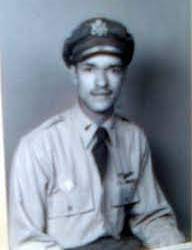


dean john-wilson as lieutenant clifford j. milburn (that finally answers my question of “which lieutenant?” after watching his last instagram story!)
leon finnan as second lieutenant sherwin l. barton (there’s actually a pic of him among this group of men, but the website is unsure of who’s who)
jonathan jules as lieutenant shelby f. westbrook (another tuskegee airman!)
marley brown as captain bob gillespie (i have no idea who this man is. it doesn’t help that 1) he doesn’t appear to be part of the 100th and 2) there are So Many “Robert Gillespie”s who served in that war, as i assume “bob” is short for “robert”)
we also have lucas button as shoen’s navigator, vaslov goom as a russian lieutenant (apparently as a “lead guest star”), and tom higgins as an excited kriegie, jack gouldbourne in an unnamed role, and ralph maystone in an unnamed role. there is also the possibility that jakob diehl will play some part.
#masters of the air#hbo war#cast#clifford milburn#sherwin barton#shelby westbrook#bob gillespie#dean john-wilson#leon finnan#jonathan jules#marley brown#lucas button#vaslov goom#tom higgins#jack gouldbourne#ralph maystone#jakob diehl
8 notes
·
View notes
Photo



18-year-old Zebb Quinn was looking forward to the end of his shift in a Walmart in Ashville, North Carolina on January 2nd, 2000. He met up with his friend Robert Owens in the parking lot and the two drove in separate cars. They intended to look at a vehicle Zebb wanted to buy, but the night didn’t go as planned. During the drive, Zebb received a page from his aunt and told Robert that he needed to return the call. After he returned from the payphone, Zebb allegedly seemed agitated, rear-ending Robert’s truck in frustration. Afterward he cancelled their plans and drove away. Two days later, someone called in sick to Zebb’s shift at work, but it wasn’t Zebb. The call was traced to Robert Owens and he admitted it was him who called in for Zebb, but it was Zebb himself who asked him to do so. The case took a strange turn when his car was found weeks later near his mother’s workplace. A pair of lips were drawn on the back of the car’s windshield and inside the car were items that did not belong to Zebb, including a live puppy. Investigators learned that he was involved with a girl named Misty Taylor and her abusive boyfriend had threatened him. His aunt also claimed that she never paged her nephew, and that at the time of his disappearance, she was eating dinner with Misty’s mother. Misty and her boyfriend were also present. In March 2015, Robert Owens was charged with the murders of Food Network Star contestant Christie Shoen, her husband, and their unborn baby, and that’s when detectives began investigating Robert’s property. On July 10, 2017, Robert was charged in Zebb Quinn’s death.
#true crime#killers#crime#homicide#zebb quinn#murder#cold cases#cold case#unsolved cases#unsolved crimes#mystery#north carolina
599 notes
·
View notes
Text
Base Tendriling Travel Expenses
As business travel expenses nose upward, companies are realizing that better cost-management techniques can make a difference
US. corporate travel expenses rocketed to more than $143 billion in 1994, according to American Express' most recent survey on business travel management. Private-sector employers spend an estimated $2,484 per employee on travel and entertainment, a 17 percent increase over the past four years.
Corporate T&E costs, now the third-largest controllable expense behind sales and data-processing costs, are under new scrutiny. http://small-home-ideas.com Corporations are realizing that even a savings of 1 percent or 2 percent can translate into millions of dollars added to their bottom line.
Savings of that order are sure to get management's attention, which is a requirement for this type of project. Involvement begins with understanding and evaluating the components of T&E management in order to control and monitor it more effectively.
Hands-on management includes assigning responsibility for travel management, implementing a quality-measurement system for travel services used, and writing and distributing a formal travel policy. Only 64 percent of U.S. corporations have travel policies.
Even with senior management's support, the road to savings is rocky-only one in three companies has successfully instituted an internal program that will help cut travel expenses, and the myriad aspects of travel are so overwhelming, most companies don't know where to start. "The industry of travel is based on information," says Steven R. Schoen, founder and CEO of The Global Group Inc. "Until such time as a passenger actually sets foot on the plane, they've [only] been purchasing information."
If that's the case, information technology seems a viable place to hammer out those elusive, but highly sought-after, savings. "Technological innovations in the business travel industry are allowing firms to realize the potential of automation to control and reduce indirect [travel] costs," says Roger H. Ballou, president of the Travel Services Group USA of American Express. "In addition, many companies are embarking on quality programs that include sophisticated process improvement and reengineering efforts designed to substantially improve T&E management processes and reduce indirect costs."
As companies look to technology to make potential savings a reality, they can get very creative about the methods they employ.
The Great Leveler
Centralized reservation systems were long the exclusive domain of travel agents and other industry professionals. But all that changed in November 1992 when a Department of Transportation ruling allowed the general public access to systems such as Apollo and SABRE. Travel-management software, such as TripPower and TravelNet, immediately sprang up, providing corporations insight into where their T&E dollars are being spent.
The software tracks spending trends by interfacing with the corporation's database and providing access to centralized reservation systems that provide immediate reservation information to airlines, hotels and car rental agencies. These programs also allow users to generate computerized travel reports on cost savings with details on where discounts were obtained, hotel and car usage and patterns of travel between cities. Actual data gives corporations added leverage when negotiating discounts with travel suppliers.
"When you own the information, you don't have to go back to square one every time you decide to change agencies," says Mary Savovie Stephens, travel manager for biotech giant Chiron Corp.
Sybase Inc., a client/server software leader with an annual T&E budget of more than $15 million, agrees. "Software gives us unprecedented visibility into how employees are spending their travel dollars and better leverage to negotiate with travel service suppliers," says Robert Lerner, director of credit and corporate travel services for Sybase Inc. "We have better access to data, faster, in a real-time environment, which is expected to bring us big savings in T&E. Now we have control over our travel information and no longer have to depend exclusively on the agencies and airlines."
The cost for this privilege depends on the volume of business. One-time purchases of travel-management software can run from under $100 to more than $125,000. Some software providers will accommodate smaller users by selling software piecemeal for $5 to $12 per booked trip, still a significant savings from the $50 industry norm per transaction.
No More Tickets
Paperless travel is catching on faster than the paperless office ever did as both service providers and consumers work together to reduce ticket prices for business travelers. Perhaps the most cutting-edge of the advances is "ticketless" travel, which almost all major airlines are testing.
In the meantime, travel providers and agencies are experimenting with new technologies to enable travelers to book travel services via the Internet, e-mail and unattended ticketing kiosks. Best Western International, Hyatt Hotels and several other major hotel chains market on the Internet. These services reduce the need for paper and offer better service and such peripheral benefits as increased efficiency, improved tracking of travel expenses and trends, and cost reduction.
Dennis Egolf, CFO of the Veterans Affairs Medical Center in Louisville, Ky., realized that the medical center's decentralized location, a quarter-mile from the hospital, made efficiency difficult. "We were losing production time and things got lost," he says. "Every memo had to be hand-carried for approval, and we required seven different copies of each travel order." As a result, Egolf tried an off-the-shelf, paper-reduction software package designed for the federal government.
The software allows the hospital to manage travel on-line, from tracking per-diem allowances and calculating expenses to generating cash advance forms and authorizing reimbursement vouchers. The software also lets the hospital keep a running account of its travel expenses and its remaining travel budget.
"Today, for all practical purposes, the system is paperless," says Egolf. The software has helped the hospital reduce document processing time by 93 percent. "The original goal focused on managing employee travel without paper," he says. "We have achieved that goal, in part due to the efforts of the staff and in part due to the accuracy of the software."
With only a $6,000 investment, the hospital saved $70 each employee trip and saved almost half of its $200,000 T&E budget through the paper-reduction program.
Out There
Consolidation of corporate travel arrangements by fewer agencies has been a growing trend since 1982. Nearly three out of four companies now make travel plans for their business locations through a single agency as opposed to 51 percent in 1988. Two major benefits of agency consolidation are the facilitation of accounting and T&E budgeting, as well as leverage in negotiating future travel discounts.
A major technological advance that allows this consolidation trend to flourish is the introduction of satellite ticket printers (STPs). Using STPs enables a travel agency to consolidate all operations to one home office, and still send all necessary tickets to various locations instantly via various wire services. As the term implies, the machinery prints out airline tickets on-site immediately, eliminating delivery charges.
For London Fog, STPs are a blessing. London Fog's annual T&E budget of more than $15 million is split equally between its two locations in Eldersburg, Md., and New York City. Each location purchases the same number of tickets, so equal access to ticketing from their agency is a must. With an STP in their two locations, the company services both offices with one agency in Baltimore. Each office has access to immediate tickets and still manages to save by not having to pay courier and express mail charges that can range up to $15 for each of the more than 500 tickets each purchases annually.
Conde Nast Publications' annual T&E budget of more than $20 million is allocated among its locations in Los Angeles, San Francisco, Chicago, New York and Detroit. Since 1994, travel arrangements have been handled by a centralized agency, Advanced Travel Management in New York City, by installing an STP in each of these five locations. In addition to increased efficiency due to consolidation, Conde Nast now has the ability to change travel plans at a moment's notice and have new tickets in hand instantly.
The real benefit is that the machines are owned and maintained by the travel agency., so there is no cost to the company. Due to the major expense involved, however, STPs remain an option only for major ticket purchasers. "STPs are a viable option in this process for any location that purchases more than $500,000 per year in tickets," says Shoen.
As airfare averages 43 percent of any company's T&E expenses, savings obtainable through the various uses of technology have become dramatic. For example, the ability of corporations to collect and analyze their own travel trends has led to the creation of net-fare purchasing-negotiating a price between a corporation and an airline to purchase tickets that does not include the added expenses of commissions, overrides, transaction fees, agency transaction fees and other discounts.
Although most major U.S. carriers publicly proclaim that they don't negotiate corporate discounts below published market fares, the American Express survey on business travel management found that 38 percent of U.S. companies had access to, or already had implemented, negotiated airline discounts. The availability and mechanics of these arrangements vary widely by carrier.
What's the Price?
Fred Swaffer, transportation manager for Hewlett-Packard and a strong advocate of the net-pricing system, has pioneered the concept of fee-based pricing with travel-management companies under contract with H-P. He states that H-P, which spends more than $528 million per year on T&E, plans to have all air travel based on net-fare pricing. "At the present time, we have several net fares at various stages of agreement," he says. "These fares are negotiated with the airlines at the corporate level, then trickle down to each of our seven geographical regions."
Frank Kent, Western regional manager for United Airlines, concurs: "United Airlines participates in corporate volume discounting, such as bulk ticket purchases, but not with net pricing. I have yet to see one net-fare agreement that makes sense to us. We're not opposed to it, but we just don't understand it right now."
Kent stresses, "Airlines should approach corporations with long-term strategic relationships rather than just discounts. We would like to see ourselves committed to a corporation rather than just involved."
As business travel expenses nose upward, companies are realizing that better cost-management techniques can make a difference.
US. corporate travel expenses rocketed to more than $143 billion in 1994, according to American Express' most recent survey on business travel management. Private-sector employers spend an estimated $2,484 per employee on travel and entertainment, a 17 percent increase over the past four years.
Corporate T&E costs, now the third-largest controllable expense behind sales and data-processing costs, are under new scrutiny. Corporations are realizing that even a savings of 1 percent or 2 percent can translate into millions of dollars added to their bottom line.
Savings of that order are sure to get management's attention, which is a requirement for this type of project. Involvement begins with understanding and evaluating the components of T&E management in order to control and monitor it more effectively.
Hands-on management includes assigning responsibility for travel management, implementing a quality-measurement system for travel services used, and writing and distributing a formal travel policy. Only 64 percent of U.S. corporations have travel policies.
Even with senior management's support, the road to savings is rocky-only one in three companies has successfully instituted an internal program that will help cut travel expenses, and the myriad aspects of travel are so overwhelming, most companies don't know where to start. "The industry of travel is based on information," says Steven R. Schoen, founder and CEO of The Global Group Inc. "Until such time as a passenger actually sets foot on the plane, they've [only] been purchasing information."
If that's the case, information technology seems a viable place to hammer out those elusive, but highly sought-after, savings. "Technological innovations in the business travel industry are allowing firms to realize the potential of automation to control and reduce indirect [travel] costs," says Roger H. Ballou, president of the Travel Services Group USA of American Express. "In addition, many companies are embarking on quality programs that include sophisticated process improvement and reengineering efforts designed to substantially improve T&E management processes and reduce indirect costs."
As companies look to technology to make potential savings a reality, they can get very creative about the methods they employ.
The Great Leveler
Centralized reservation systems were long the exclusive domain of travel agents and other industry professionals. But all that changed in November 1992 when a Department of Transportation ruling allowed the general public access to systems such as Apollo and SABRE. Travel-management software, such as TripPower and TravelNet, immediately sprang up, providing corporations insight into where their T&E dollars are being spent.
The software tracks spending trends by interfacing with the corporation's database and providing access to centralized reservation systems that provide immediate reservation information to airlines, hotels and car rental agencies. These programs also allow users to generate computerized travel reports on cost savings with details on where discounts were obtained, hotel and car usage and patterns of travel between cities. Actual data gives corporations added leverage when negotiating discounts with travel suppliers.
"When you own the information, you don't have to go back to square one every time you decide to change agencies," says Mary Savovie Stephens, travel manager for biotech giant Chiron Corp.
Sybase Inc., a client/server software leader with an annual T&E budget of more than $15 million, agrees. "Software gives us unprecedented visibility into how employees are spending their travel dollars and better leverage to negotiate with travel service suppliers," says Robert Lerner, director of credit and corporate travel services for Sybase Inc. "We have better access to data, faster, in a real-time environment, which is expected to bring us big savings in T&E. Now we have control over our travel information and no longer have to depend exclusively on the agencies and airlines."
The cost for this privilege depends on the volume of business. One-time purchases of travel-management software can run from under $100 to more than $125,000. Some software providers will accommodate smaller users by selling software piecemeal for $5 to $12 per booked trip, still a significant savings from the $50 industry norm per transaction.
No More Tickets
Paperless travel is catching on faster than the paperless office ever did as both service providers and consumers work together to reduce ticket prices for business travelers. Perhaps the most cutting-edge of the advances is "ticketless" travel, which almost all major airlines are testing.
In the meantime, travel providers and agencies are experimenting with new technologies to enable travelers to book travel services via the Internet, e-mail and unattended ticketing kiosks. Best Western International, Hyatt Hotels and several other major hotel chains market on the Internet. These services reduce the need for paper and offer better service and such peripheral benefits as increased efficiency, improved tracking of travel expenses and trends, and cost reduction.
Dennis Egolf, CFO of the Veterans Affairs Medical Center in Louisville, Ky., realized that the medical center's decentralized location, a quarter-mile from the hospital, made efficiency difficult. "We were losing production time and things got lost," he says. "Every memo had to be hand-carried for approval, and we required seven different copies of each travel order." As a result, Egolf tried an off-the-shelf, paper-reduction software package designed for the federal government.
The software allows the hospital to manage travel on-line, from tracking per-diem allowances and calculating expenses to generating cash advance forms and authorizing reimbursement vouchers. The software also lets the hospital keep a running account of its travel expenses and its remaining travel budget.
"Today, for all practical purposes, the system is paperless," says Egolf. The software has helped the hospital reduce document processing time by 93 percent. "The original goal focused on managing employee travel without paper," he says. "We have achieved that goal, in part due to the efforts of the staff and in part due to the accuracy of the software."
With only a $6,000 investment, the hospital saved $70 each employee trip and saved almost half of its $200,000 T&E budget through the paper-reduction program.
Out There
Consolidation of corporate travel arrangements by fewer agencies has been a growing trend since 1982. Nearly three out of four companies now make travel plans for their business locations through a single agency as opposed to 51 percent in 1988. Two major benefits of agency consolidation are the facilitation of accounting and T&E budgeting, as well as leverage in negotiating future travel discounts.
A major technological advance that allows this consolidation trend to flourish is the introduction of satellite ticket printers (STPs). Using STPs enables a travel agency to consolidate all operations to one home office, and still send all necessary tickets to various locations instantly via various wire services. As the term implies, the machinery prints out airline tickets on-site immediately, eliminating delivery charges.
For London Fog, STPs are a blessing. London Fog's annual T&E budget of more than $15 million is split equally between its two locations in Eldersburg, Md., and New York City. Each location purchases the same number of tickets, so equal access to ticketing from their agency is a must. With an STP in their two locations, the company services both offices with one agency in Baltimore. Each office has access to immediate tickets and still manages to save by not having to pay courier and express mail charges that can range up to $15 for each of the more than 500 tickets each purchases annually.
Conde Nast Publications' annual T&E budget of more than $20 million is allocated among its locations in Los Angeles, San Francisco, Chicago, New York and Detroit. Since 1994, travel arrangements have been handled by a centralized agency, Advanced Travel Management in New York City, by installing an STP in each of these five locations. In addition to increased efficiency due to consolidation, Conde Nast now has the ability to change travel plans at a moment's notice and have new tickets in hand instantly.
The real benefit is that the machines are owned and maintained by the travel agency., so there is no cost to the company. Due to the major expense involved, however, STPs remain an option only for major ticket purchasers. "STPs are a viable option in this process for any location that purchases more than $500,000 per year in tickets," says Shoen.
As airfare averages 43 percent of any company's T&E expenses, savings obtainable through the various uses of technology have become dramatic. For example, the ability of corporations to collect and analyze their own travel trends has led to the creation of net-fare purchasing-negotiating a price between a corporation and an airline to purchase tickets that does not include the added expenses of commissions, overrides, transaction fees, agency transaction fees and other discounts.
Although most major U.S. carriers publicly proclaim that they don't negotiate corporate discounts below published market fares, the American Express survey on business travel management found that 38 percent of U.S. companies had access to, or already had implemented, negotiated airline discounts. The availability and mechanics of these arrangements vary widely by carrier.
What's the Price?
Fred Swaffer, transportation manager for Hewlett-Packard and a strong advocate of the net-pricing system, has pioneered the concept of fee-based pricing with travel-management companies under contract with H-P. He states that H-P, which spends more than $528 million per year on T&E, plans to have all air travel based on net-fare pricing. "At the present time, we have several net fares at various stages of agreement," he says. "These fares are negotiated with the airlines at the corporate level, then trickle down to each of our seven geographical regions."
Frank Kent, Western regional manager for United Airlines, concurs: "United Airlines participates in corporate volume discounting, such as bulk ticket purchases, but not with net pricing. I have yet to see one net-fare agreement that makes sense to us. We're not opposed to it, but we just don't understand it right now.
0 notes